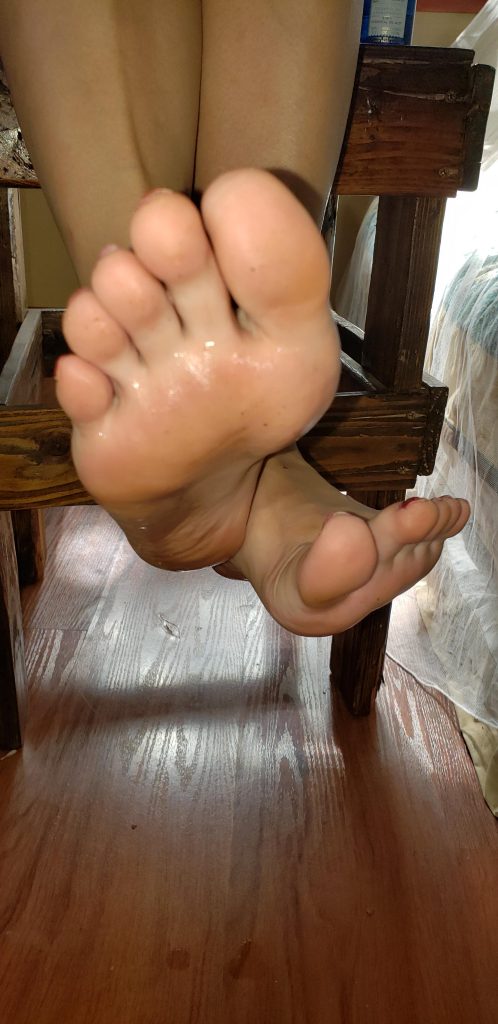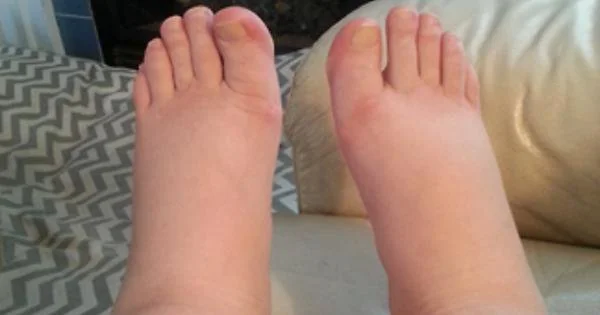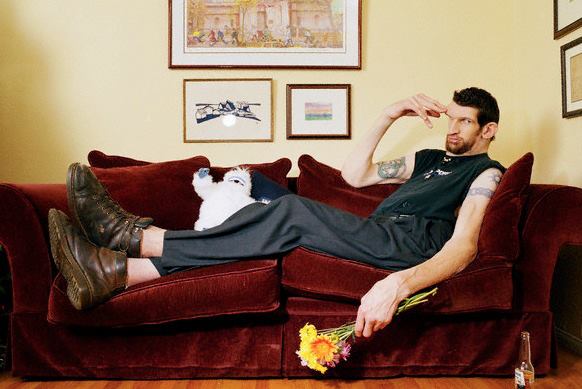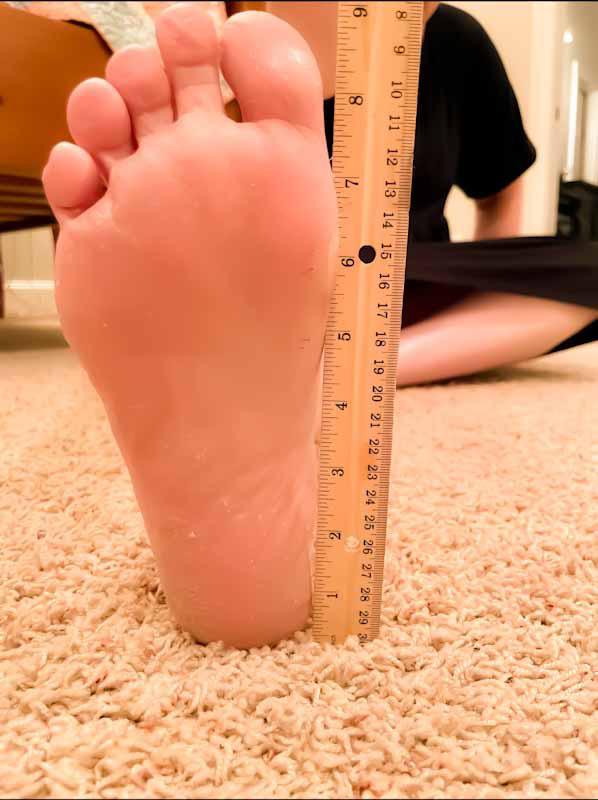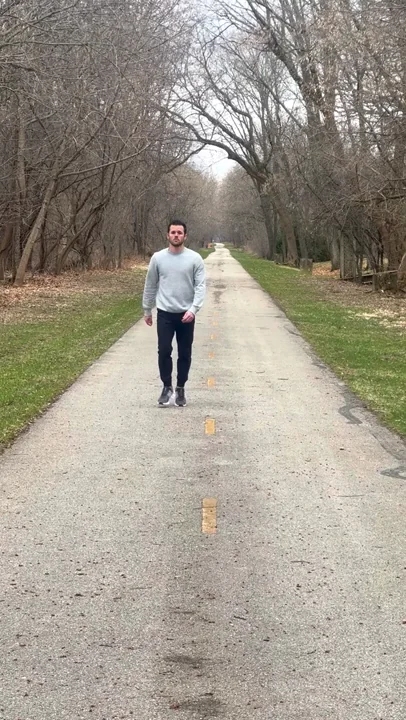Here’s What Your Feet Say About Your Health
1. Toe Nails With Slightly Sunken Indentations
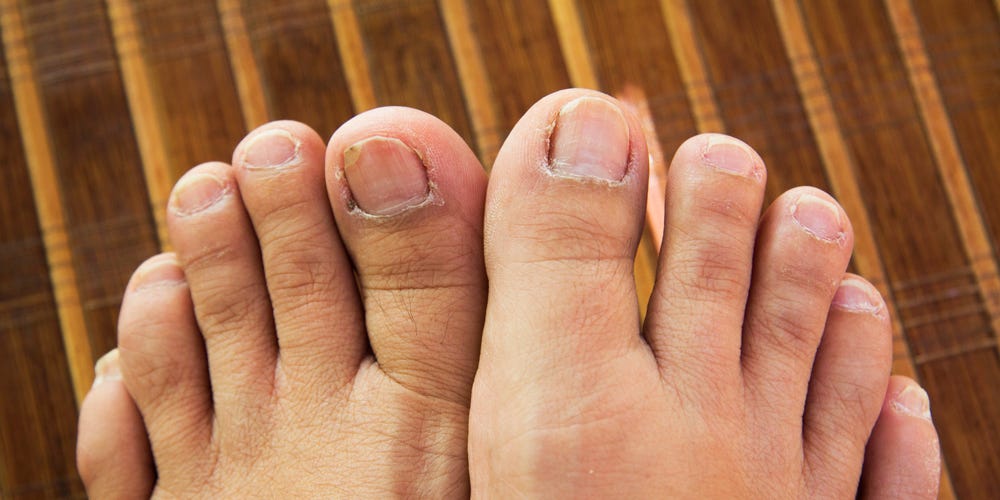 imagesource/womenshealthSunken toenails with indentations may be a sign of chronic iron deficiency or aenemia. If you find that you have concave toenails, it could be due to high altitude, trauma or exposure to petroleum products. May sure to always check with your doctor if you notice any differences in your body.
imagesource/womenshealthSunken toenails with indentations may be a sign of chronic iron deficiency or aenemia. If you find that you have concave toenails, it could be due to high altitude, trauma or exposure to petroleum products. May sure to always check with your doctor if you notice any differences in your body.Advertisement
2. Hairless Feet Or Toes
 imagesource/redditThis could be a sign of peripheral arterial disease (PAD). “Signs of PAD can include decreased hair growth on the feet and ankles, purplish toes, and thin or shiny skin,” says Suzanne Fuchs, DPM, a podiatric surgeon in private practice at Luxe Podiatry in Palm Beach, FL. Around 6.5 million American over 40 are affected by PAD.
imagesource/redditThis could be a sign of peripheral arterial disease (PAD). “Signs of PAD can include decreased hair growth on the feet and ankles, purplish toes, and thin or shiny skin,” says Suzanne Fuchs, DPM, a podiatric surgeon in private practice at Luxe Podiatry in Palm Beach, FL. Around 6.5 million American over 40 are affected by PAD.Advertisement
3. Frequent Foot Cramping
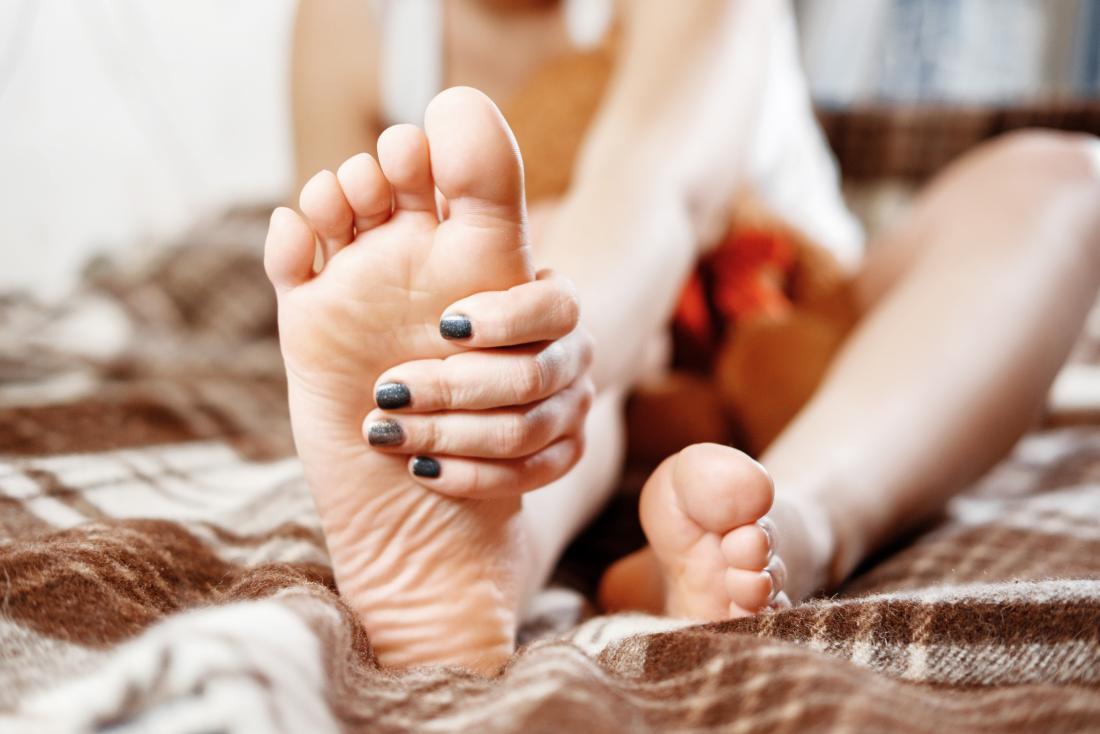 imagesource/medicalnewstodayIf you're exercising enough and drinking enough water, you might want to up your intake of potassium, magnesium and calcium, supplements like these can really help! “For relief, soak feet in a warm foot bath and stretch your toes toward your nose, not pointing down,” says Dr. McAloon.
imagesource/medicalnewstodayIf you're exercising enough and drinking enough water, you might want to up your intake of potassium, magnesium and calcium, supplements like these can really help! “For relief, soak feet in a warm foot bath and stretch your toes toward your nose, not pointing down,” says Dr. McAloon.Advertisement
4. Sores That Won't Heal
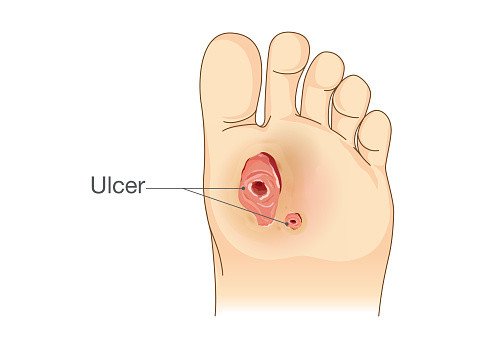 imagesource/drugs.com“Many, many people with diabetes are diagnosed first because of foot problems,” says Reid. When blood doesn't get to a wound, the skin doesn't heal properly and that's how diabetic blisters and ulcers start. If you're experiencing any of these symptoms then just go & see your doctor.
imagesource/drugs.com“Many, many people with diabetes are diagnosed first because of foot problems,” says Reid. When blood doesn't get to a wound, the skin doesn't heal properly and that's how diabetic blisters and ulcers start. If you're experiencing any of these symptoms then just go & see your doctor.Advertisement
5. Constant Cold Feet
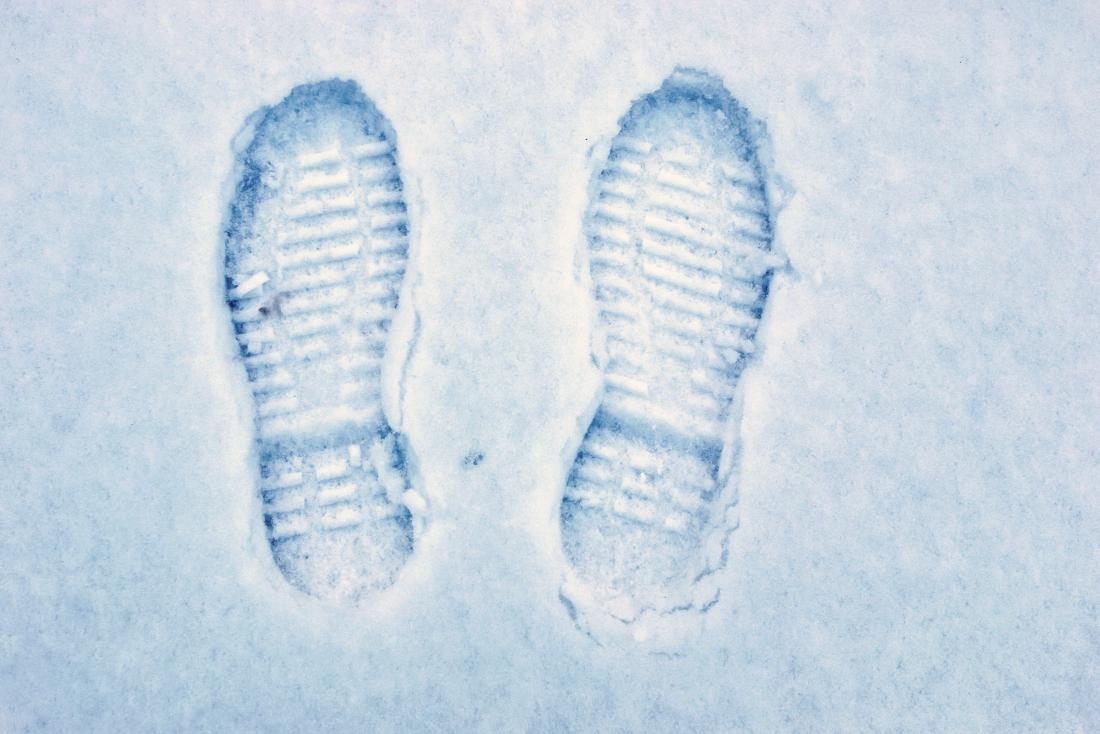 imagesource/medicalnewstodayWhat it could mean: Hypothyroidism. If you're over 40, you could have a sluggish thyroid without knowing it, so if you're constantly struggling to warm your feet up, then this could be the issues. Hyperthyroidism can also cause hair loss, fatigue, unexplained weight gain and depression too.
imagesource/medicalnewstodayWhat it could mean: Hypothyroidism. If you're over 40, you could have a sluggish thyroid without knowing it, so if you're constantly struggling to warm your feet up, then this could be the issues. Hyperthyroidism can also cause hair loss, fatigue, unexplained weight gain and depression too.Advertisement
6. Thick, Yellow, Downright Toenails
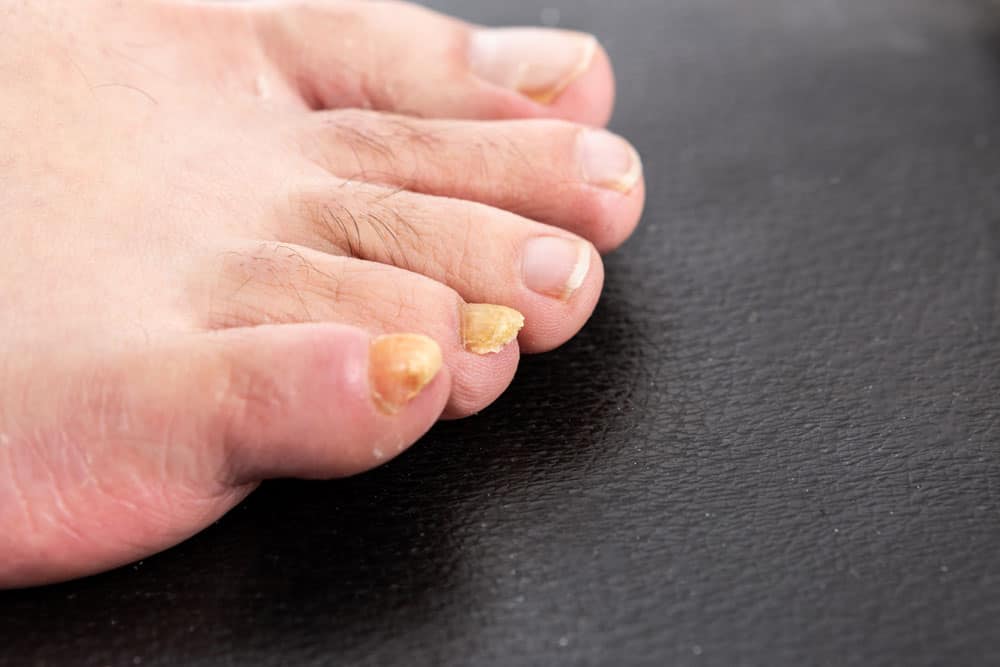 imagesource/preferredfootandankleclinicSigns of a fungal infection are thick, yellow, downright toenails. People with autoimmune diseases are more at risk of developing fungal infections if they're taking immunosuppressant medications. Other medications can also increase the risk of developing fungal infections too.
imagesource/preferredfootandankleclinicSigns of a fungal infection are thick, yellow, downright toenails. People with autoimmune diseases are more at risk of developing fungal infections if they're taking immunosuppressant medications. Other medications can also increase the risk of developing fungal infections too.Advertisement
7. Numbness In Both Feet
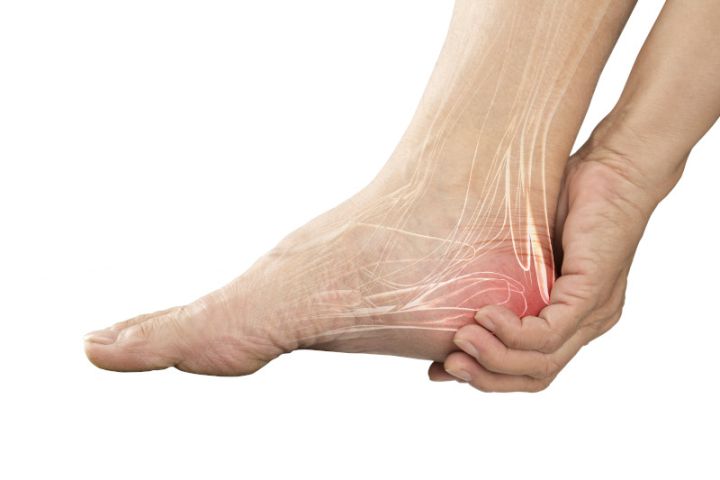 imagesource/certifiedfootandankleclinicPeripheral neuropathy or a pinched nerve could be the reason why you're experiencing numbness in your little trotters. If you're experiencing neuroma, or numbness in only one foot, you could just have a pinched nerve. likely caused by years of wearing tight shoes.
imagesource/certifiedfootandankleclinicPeripheral neuropathy or a pinched nerve could be the reason why you're experiencing numbness in your little trotters. If you're experiencing neuroma, or numbness in only one foot, you could just have a pinched nerve. likely caused by years of wearing tight shoes.Advertisement
8. Stiff, Sore Toe Joints
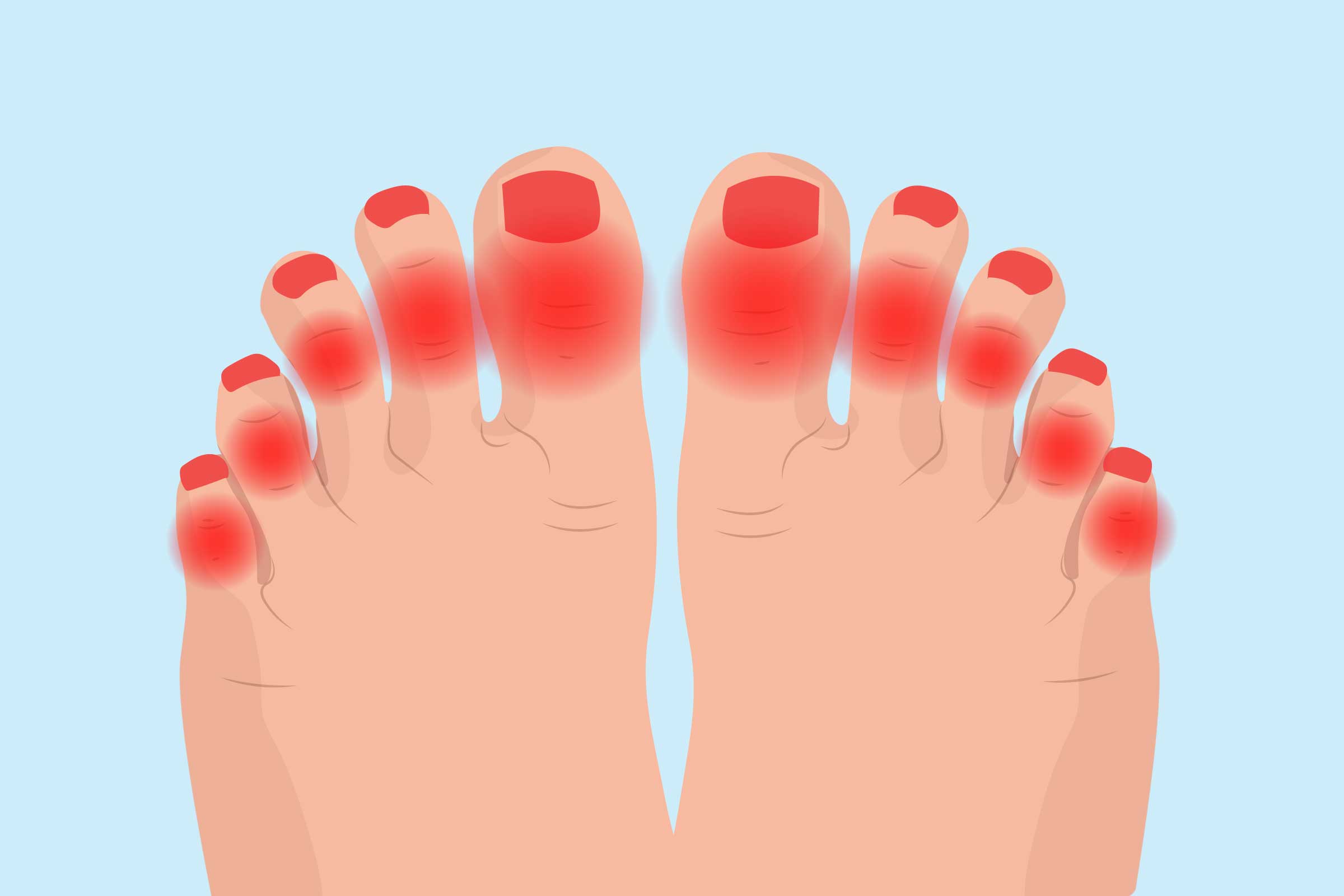 imagesource/creakyjointsAccording to John Hopkins Medicine, signs of Rheumatoid arthritis typically start in the small joins or the hands and feet. If you have persistent achyness or swelling, talk to your doctor about seeing a rheumatologist. It's always better to consult your doctor when you notice any changes in your body, however small.
imagesource/creakyjointsAccording to John Hopkins Medicine, signs of Rheumatoid arthritis typically start in the small joins or the hands and feet. If you have persistent achyness or swelling, talk to your doctor about seeing a rheumatologist. It's always better to consult your doctor when you notice any changes in your body, however small.Advertisement
9. Dry, Flaky Feet
:max_bytes(150000):strip_icc()/iStock-670950774-58ff78db5f9b581d594b02f5-969c69c3b29f41d5a163384cf41e86bf.jpg) imagesource/verywellhealth“Thyroid problems cause severe dryness of the skin,” says Marlene Reid, DPM, a foot specialist at Family Podiatry Center in Naperville, Illinois. “When we see cracking on the feet, or if moisturizer doesn’t improve dryness over a few days, we usually refer patients to their primary doctor to make sure their thyroids are okay.”
imagesource/verywellhealth“Thyroid problems cause severe dryness of the skin,” says Marlene Reid, DPM, a foot specialist at Family Podiatry Center in Naperville, Illinois. “When we see cracking on the feet, or if moisturizer doesn’t improve dryness over a few days, we usually refer patients to their primary doctor to make sure their thyroids are okay.”Advertisement
10. An Painful, Enlarged Toe Nail
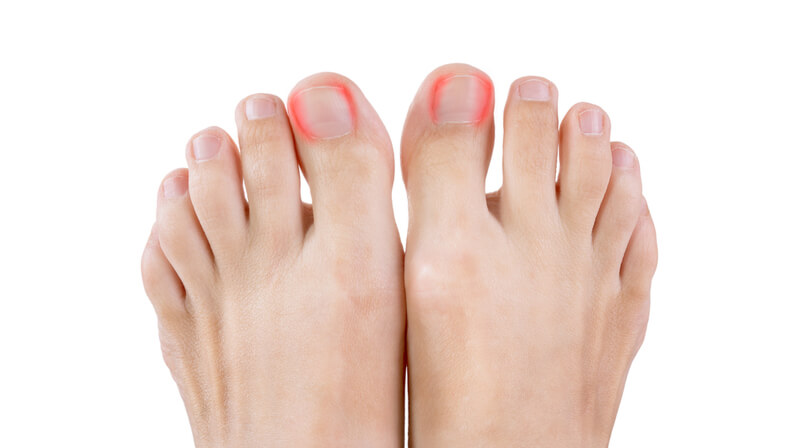 imagesource/rapidcareemergencyroomFoods high in protein ca trigger a rise in uric acid in your body, which in turn, results in Gout. “You’ll see the deposition of the uric acid in the joint, most commonly the big toe or the ankle,” says Bob Baravarian, DPM, a podiatric foot and ankle specialist. If it's not gout, there are many other possible causes of toe pain.
imagesource/rapidcareemergencyroomFoods high in protein ca trigger a rise in uric acid in your body, which in turn, results in Gout. “You’ll see the deposition of the uric acid in the joint, most commonly the big toe or the ankle,” says Bob Baravarian, DPM, a podiatric foot and ankle specialist. If it's not gout, there are many other possible causes of toe pain.Advertisement
11. Red Lines Under Your Toenail - Usually Small Ones
 imagesource/clevelandclinicSmall red lines under the toe nail could be broken blood vessels known as splinter hemorrhages but it can also be a sign of endocarditis which is an infection of the heart's inner lining. So if you notice this little splinters and you haven't experienced any trauma to the nail, then keep an eye on it.
imagesource/clevelandclinicSmall red lines under the toe nail could be broken blood vessels known as splinter hemorrhages but it can also be a sign of endocarditis which is an infection of the heart's inner lining. So if you notice this little splinters and you haven't experienced any trauma to the nail, then keep an eye on it.Advertisement
12. Clubbing Of The Nail
 imagesource/wikipediaThe symptom of clubbing is often associated with lung cancer, chronic ling infection or heart conditions caused by birth defects or infection of the lining of the heart valves. Clubbing occurs when theres a lower amount of oxygen in the blood which causes rounder, wider fingers and toes.
imagesource/wikipediaThe symptom of clubbing is often associated with lung cancer, chronic ling infection or heart conditions caused by birth defects or infection of the lining of the heart valves. Clubbing occurs when theres a lower amount of oxygen in the blood which causes rounder, wider fingers and toes.Advertisement
13. Pits In Your Toenails
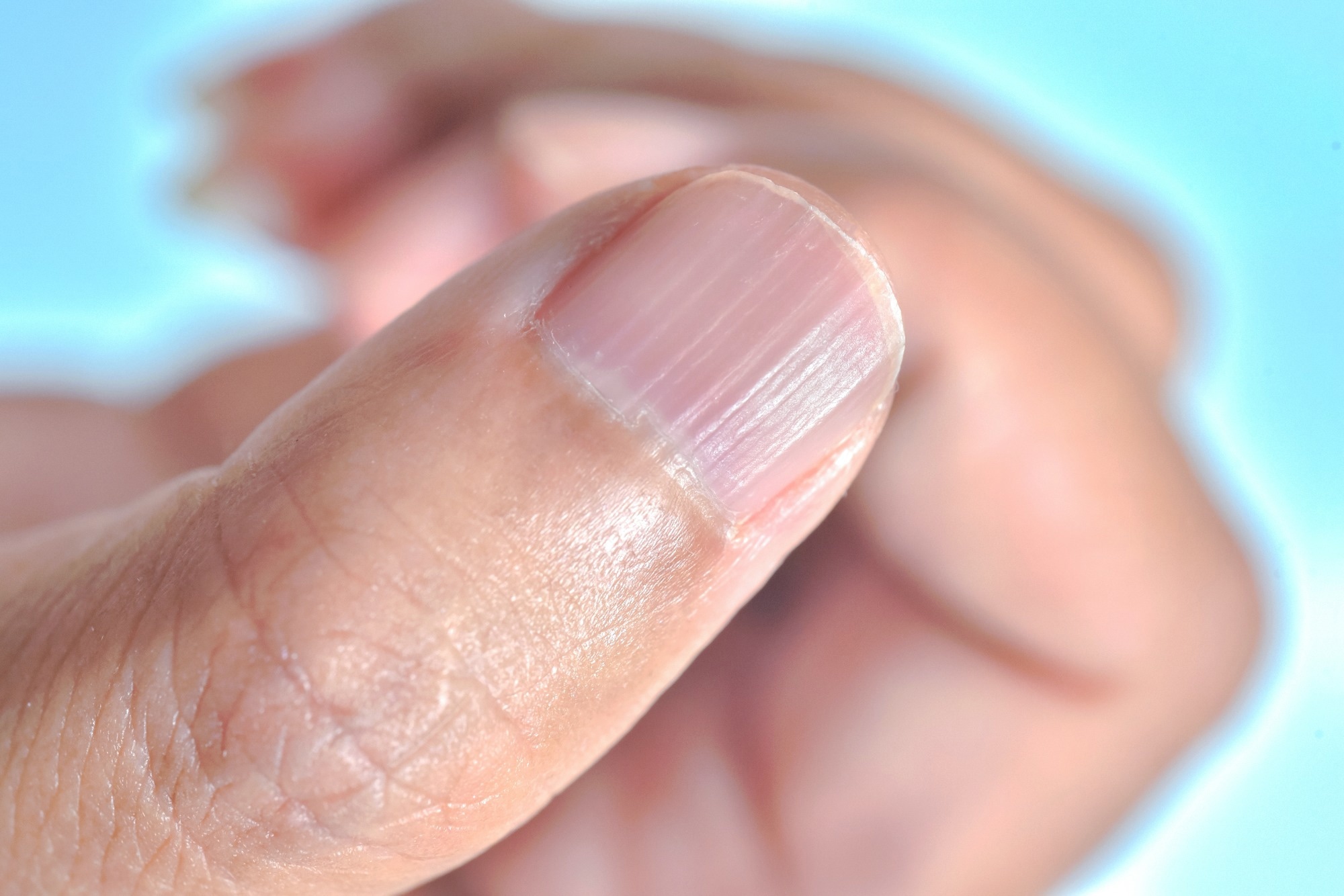 imagesource/newsmedicalIf you find little grooves or ridges in your toenails, you may have nail psoriasis (an autoimmune disease that makes skin patchy and irritated). 5% of the population with nail psoriasis do not feel the affects elsewhere on their body. Other symptoms include white patches and horizontal lines across the nails.
imagesource/newsmedicalIf you find little grooves or ridges in your toenails, you may have nail psoriasis (an autoimmune disease that makes skin patchy and irritated). 5% of the population with nail psoriasis do not feel the affects elsewhere on their body. Other symptoms include white patches and horizontal lines across the nails.Advertisement
14. Bunions. Bunions. BUNIONS
 imagesource/peninsulaorthopedicThis could just be an inherited faulty foot structure and are merely aggravated by inappropriate shoes. “The first foot bone drives toward the middle of the body, and you see the bump,” explains Dr. McAloon. The only way to correct this issue is surgery!
imagesource/peninsulaorthopedicThis could just be an inherited faulty foot structure and are merely aggravated by inappropriate shoes. “The first foot bone drives toward the middle of the body, and you see the bump,” explains Dr. McAloon. The only way to correct this issue is surgery!Advertisement
15. Yellow Toe Nails Can Be A Sign Of Fungus Or Pedicure Overloads
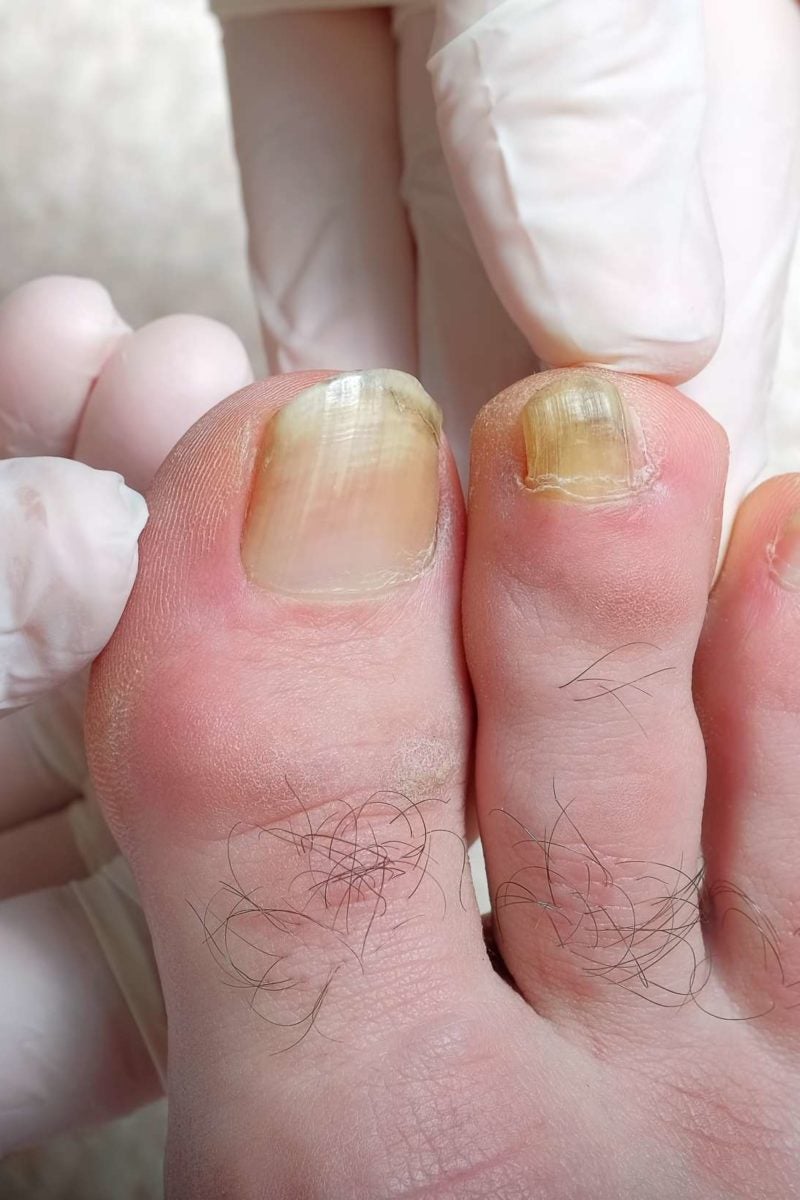 imagesource/medicalnewstoday“Yellowness can also happen naturally with age,” says Dr. McAloon. If you're finding brittleness or flaking, you probably have a fungal infection like athlete's foot - which is very easy to get rid of. Go down to your local pharmacy for some medication or or check out some home remedies.
imagesource/medicalnewstoday“Yellowness can also happen naturally with age,” says Dr. McAloon. If you're finding brittleness or flaking, you probably have a fungal infection like athlete's foot - which is very easy to get rid of. Go down to your local pharmacy for some medication or or check out some home remedies.Advertisement
16. The Inability To Lift The Front Part Of Your Foot
 imagesource/danpreeceThe paralysis or weakness of the muscles that lift the food cause the inability to lift the front part of your foot. This could be a sign of a number of underlying disorders like neurodegenerative disorders, MS, stroke, cerebral palsy, polio and ALS as well as other muscle or nerve disorders.
imagesource/danpreeceThe paralysis or weakness of the muscles that lift the food cause the inability to lift the front part of your foot. This could be a sign of a number of underlying disorders like neurodegenerative disorders, MS, stroke, cerebral palsy, polio and ALS as well as other muscle or nerve disorders.Advertisement
17. Your Toes Are Red or Blue
 imagesource/medicalnewstodayNow we've all heard of Raynaud's disease which is a disorder of the blood vessels supplying the kin and certain parts of the body like the toes and fingers become number and turn blue when exposed to cold temperatures. This can happen even when your under stress, so make sure to cover up when you're outdoors.
imagesource/medicalnewstodayNow we've all heard of Raynaud's disease which is a disorder of the blood vessels supplying the kin and certain parts of the body like the toes and fingers become number and turn blue when exposed to cold temperatures. This can happen even when your under stress, so make sure to cover up when you're outdoors.Advertisement
18. The Dreaded Ingrown Toenails
 imagesource/mersinsistemIngrown toenails are a common complaint and occur when nails have an excessive curve, have been cut badly or through injury and compression. Untreated toenails may require surgery to correct the condition if they end up infected or bleeding. Ingrown toenails can also ruin any chance of wearing nice open toed shoes in the summer, and nobody wants that, do they!
imagesource/mersinsistemIngrown toenails are a common complaint and occur when nails have an excessive curve, have been cut badly or through injury and compression. Untreated toenails may require surgery to correct the condition if they end up infected or bleeding. Ingrown toenails can also ruin any chance of wearing nice open toed shoes in the summer, and nobody wants that, do they!Advertisement
19. Numbness & Tingling
:max_bytes(150000):strip_icc()/Tingling-In-Feet-GettyImages-1253661276-2000-a82926b8f1fa4f6c9ad6154549343121.jpg) imagesource/health"One of the first symptoms of MS is often a numbness or tingling sensation, sometimes in your feet," says Julie Fiol, RN, director of MS information and resources at the National MS Society. Numbness and tingling can be a sign of MS and Fiol explains that one foot may have a different sensation that the other.
imagesource/health"One of the first symptoms of MS is often a numbness or tingling sensation, sometimes in your feet," says Julie Fiol, RN, director of MS information and resources at the National MS Society. Numbness and tingling can be a sign of MS and Fiol explains that one foot may have a different sensation that the other.Advertisement
20. Restless Feet At Night
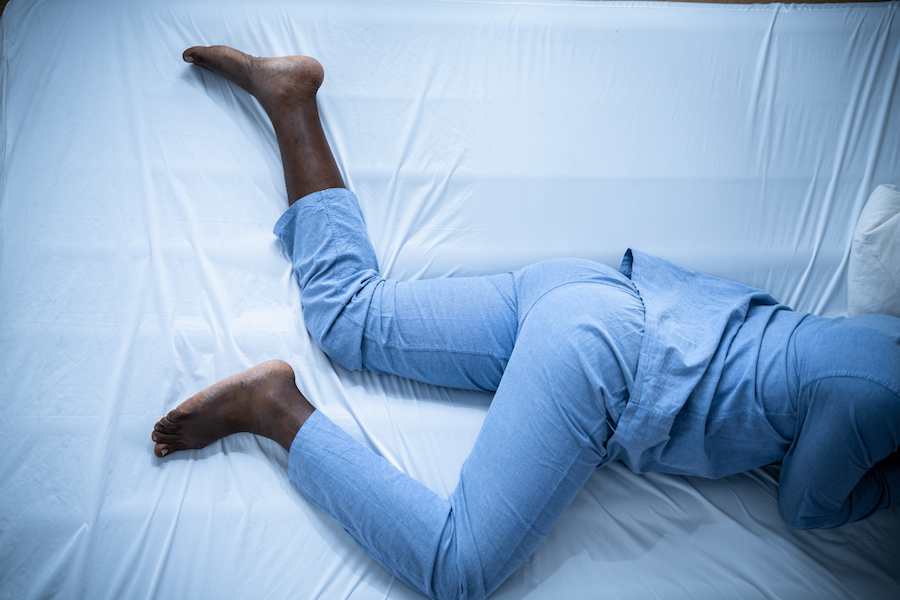 imagesource/davisfinneyfoundation"Restless feet and legs at night is often a signal that you have an iron deficiency," says Arielle Levitan, MD, a physician of internal medicine and co-founder of Vous Vitamin LLC. Try taking a daily vitamin and schedule an appointment with your physician if the problem carries on.
imagesource/davisfinneyfoundation"Restless feet and legs at night is often a signal that you have an iron deficiency," says Arielle Levitan, MD, a physician of internal medicine and co-founder of Vous Vitamin LLC. Try taking a daily vitamin and schedule an appointment with your physician if the problem carries on.Advertisement
21. Spider Veins & Varicose Veins In Your Ankle
 imagesource/heartveinnyc"Clusters of tiny blue and red blood vessels in the inner ankle may indicate an underlying problem [that's] not visible to the naked eye," says Nisha Bunke, a vein specialist at La Jolla Vein Care in San Diego, California. If left untreated, venous reflux can lead to blood clots and hemorrhaging.
imagesource/heartveinnyc"Clusters of tiny blue and red blood vessels in the inner ankle may indicate an underlying problem [that's] not visible to the naked eye," says Nisha Bunke, a vein specialist at La Jolla Vein Care in San Diego, California. If left untreated, venous reflux can lead to blood clots and hemorrhaging.Advertisement
22. Darkening Of The Skin Around Your Ankle
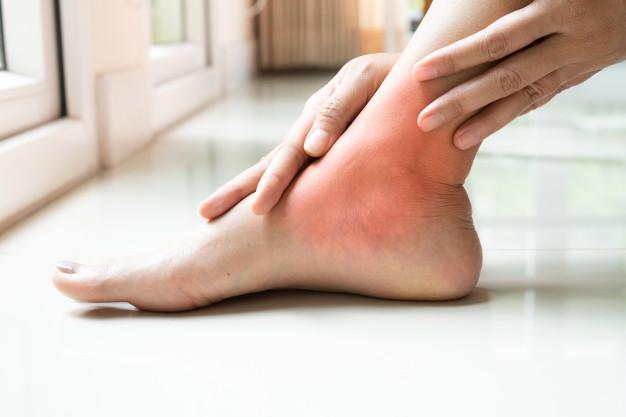 imagesource/veinspecialistsDarkening around the skin around your ankle can be a sign of a chronic venous insufficiency. "This [symptom] usually occurs in the inner ankle and can worsen to involve the lower portion of the leg," Bunke says. "Over time, the skin becomes firm, dry, eczema-like, and itchy and can even break open, causing a venous leg ulcer."
imagesource/veinspecialistsDarkening around the skin around your ankle can be a sign of a chronic venous insufficiency. "This [symptom] usually occurs in the inner ankle and can worsen to involve the lower portion of the leg," Bunke says. "Over time, the skin becomes firm, dry, eczema-like, and itchy and can even break open, causing a venous leg ulcer."Advertisement
23. Cracked Heels
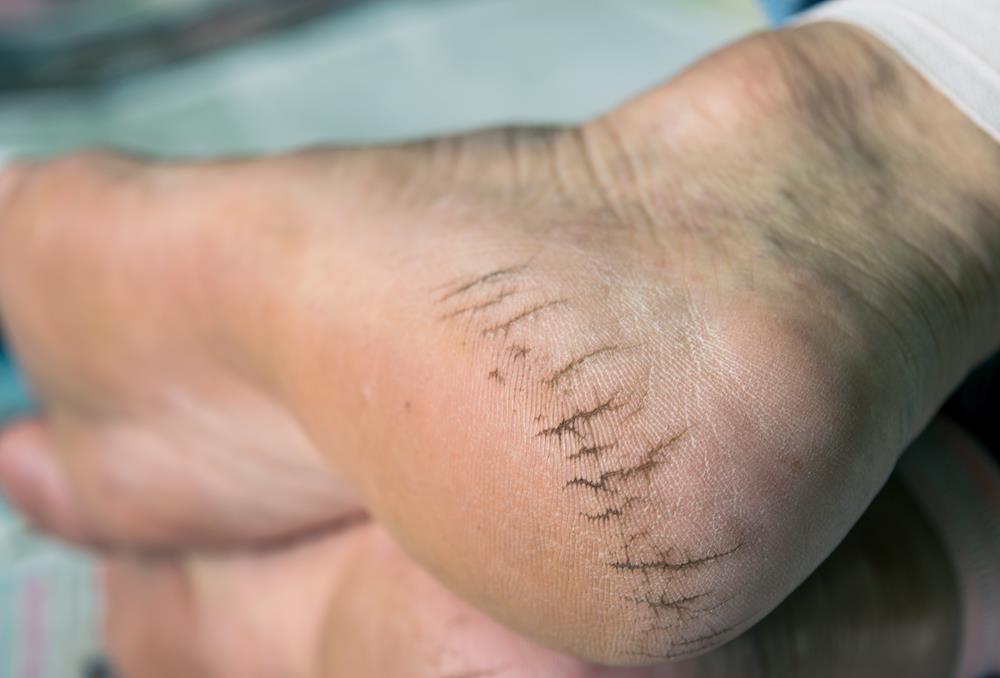 imagesource/absolutefootandankleclinicOne symptom of cracked heels is linked to the health of your thyroid. "Skin that is cracked over the heels is a classic sign of an underactive thyroid," Platt says. However, other symptoms can include weight gain, depression, muscle aches and fatigue.
imagesource/absolutefootandankleclinicOne symptom of cracked heels is linked to the health of your thyroid. "Skin that is cracked over the heels is a classic sign of an underactive thyroid," Platt says. However, other symptoms can include weight gain, depression, muscle aches and fatigue.Advertisement
24. Green Toenails
 imagesource/michiganfootdoctorIf you're noticing that your toenails are going green, it may be due to chloronychia - this is caused by the bacterium Pseudomonas aeruginosa which presents itself when the foot is exposed to water or certain soaps and detergents. It can be treated very easily with medical soaking or keeping the nails dry.
imagesource/michiganfootdoctorIf you're noticing that your toenails are going green, it may be due to chloronychia - this is caused by the bacterium Pseudomonas aeruginosa which presents itself when the foot is exposed to water or certain soaps and detergents. It can be treated very easily with medical soaking or keeping the nails dry.Advertisement
25. Swollen Ankles Can Be A Sign of High Blood Pressure
:max_bytes(150000):strip_icc()/GettyImages-1277450943-a26b6a2e487d4ace982627bd9a815cac.jpg) imagesource/verywellhealthHigh blood pressure has the heart working over time. Fluid builds up in the lower legs and ankles causing them to become swollen. You should go to see your doctor and get it checked out if you're unsure of what's going on. It's always better to be safe than sorry!
imagesource/verywellhealthHigh blood pressure has the heart working over time. Fluid builds up in the lower legs and ankles causing them to become swollen. You should go to see your doctor and get it checked out if you're unsure of what's going on. It's always better to be safe than sorry!Advertisement
26. Never Ignore Brown Streaks In Your Toenail
 imagesource/healthlineA black or brown toenail could be a sign of subungual melanoma which is a form of skin cancer. If you've not had any injuries to your feet, then get your feet checked out. If the streak increases in size or doesn't heal, make am appointment with a dermatologist.
imagesource/healthlineA black or brown toenail could be a sign of subungual melanoma which is a form of skin cancer. If you've not had any injuries to your feet, then get your feet checked out. If the streak increases in size or doesn't heal, make am appointment with a dermatologist.Advertisement
27. Burning In Your Feet
 imagesource/podiatryhealthlineAnother symptom of neuropathy, PAD, peripheral neuropathy is to have burning feet and this can be due to diabetes or other factors. Burning feet can also be due to nerve damage in the legs from athlete's foot, however, it's often caused by PAD, so go and get checked if you're noticing these symptoms.
imagesource/podiatryhealthlineAnother symptom of neuropathy, PAD, peripheral neuropathy is to have burning feet and this can be due to diabetes or other factors. Burning feet can also be due to nerve damage in the legs from athlete's foot, however, it's often caused by PAD, so go and get checked if you're noticing these symptoms.Advertisement
28. Feet That Are Really Painful To Walk On
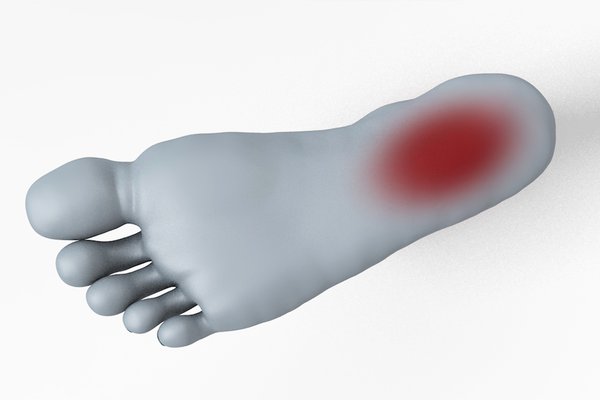 imagesource/NHSDiscomfort in your feet when you walk can be caused from malnutrition, including a vitamin D deficiency, a problem with absorbing calcium or anorexia. Women over the age of 55 with these pains, may need a bone density exam so just go and check in with your doctor to see what they say!
imagesource/NHSDiscomfort in your feet when you walk can be caused from malnutrition, including a vitamin D deficiency, a problem with absorbing calcium or anorexia. Women over the age of 55 with these pains, may need a bone density exam so just go and check in with your doctor to see what they say!Advertisement
29. Black Or Dark Toenails
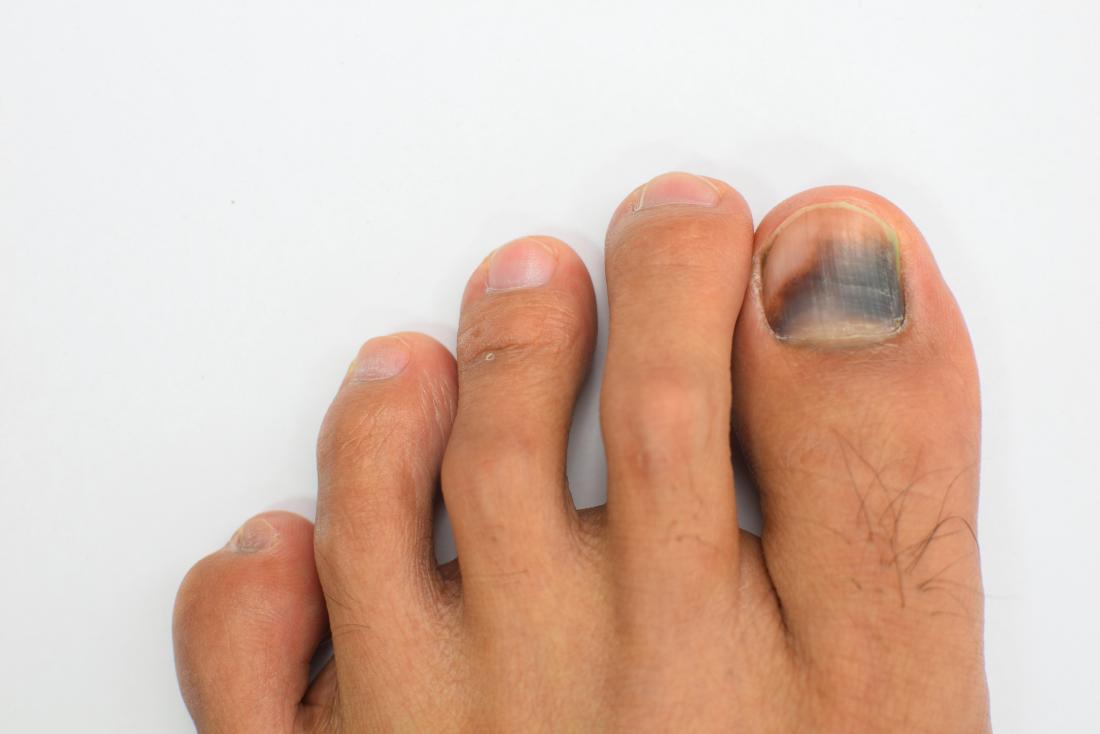 imagesource/torbayfootcareBlack or dark toenails are usually a sign of injury, if you've hurt your foot and bruised under the toe nail, it can cause the change in colour. However, bruises under the toenail can cause a fungal infection or a sore that can become infected. If you do have diabetes though, you should get your discoloured nails check out.
imagesource/torbayfootcareBlack or dark toenails are usually a sign of injury, if you've hurt your foot and bruised under the toe nail, it can cause the change in colour. However, bruises under the toenail can cause a fungal infection or a sore that can become infected. If you do have diabetes though, you should get your discoloured nails check out.Advertisement
30. Heel Pain Can Be A Sign Of Plantar Fasciitis
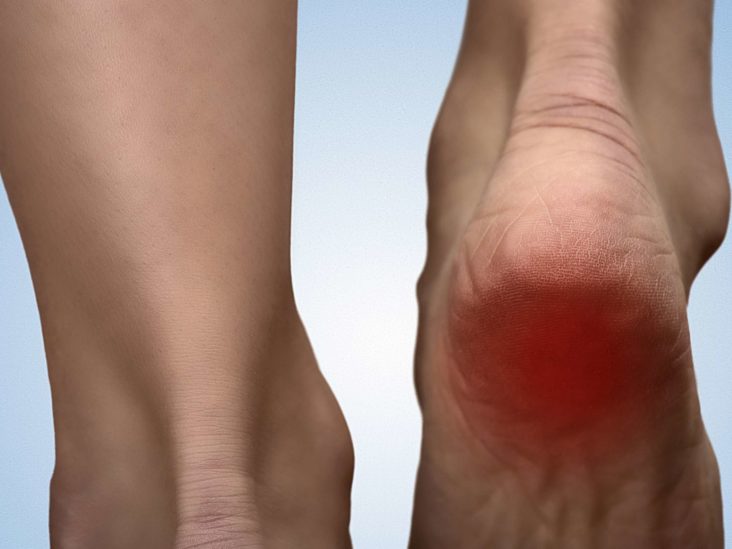 imagesource/medicalnewstodayIf you get a sharp pain in the bottom of your heel when you get out of bed or stand up from your seat, it could be a strain from the ligament that supports your arch. Podiatrists will tell you to easy up on your workouts and to rethink your footwear. Make sure to stretch each day & it should ease up, but with things like this, it's always best to consult your doctor.
imagesource/medicalnewstodayIf you get a sharp pain in the bottom of your heel when you get out of bed or stand up from your seat, it could be a strain from the ligament that supports your arch. Podiatrists will tell you to easy up on your workouts and to rethink your footwear. Make sure to stretch each day & it should ease up, but with things like this, it's always best to consult your doctor.Advertisement
31. Pale Toenails
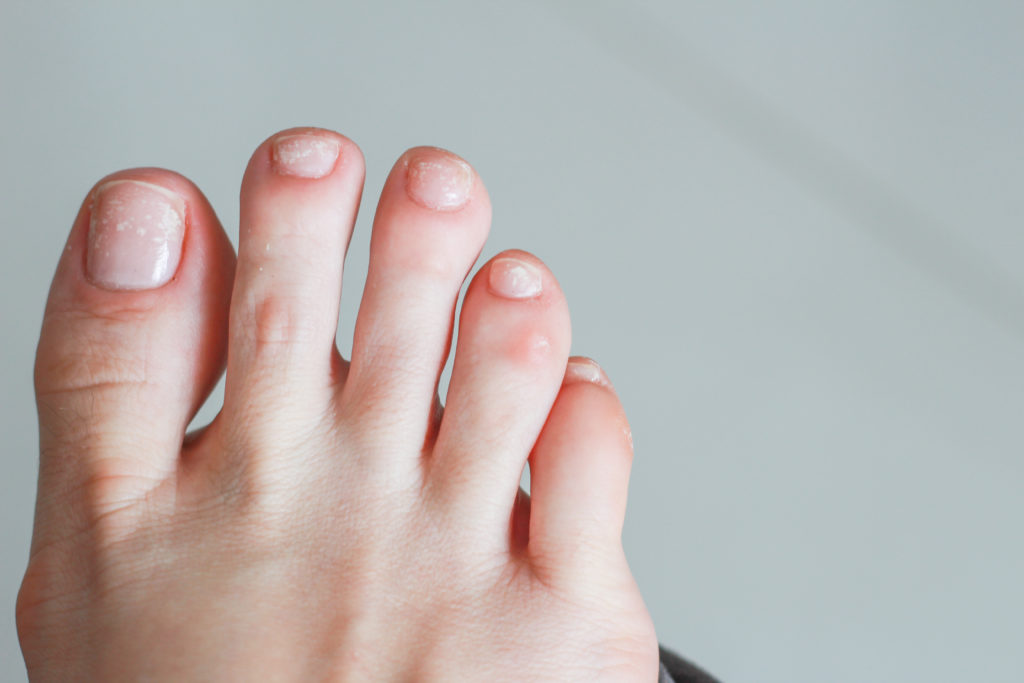 imagesource/mrfootdr"They can also be caused by malfunctions in the liver or heart, or poor nutrition, so it is important to get this issue checked out," Podiatrist, Dina Gohil says. " If your nails are mostly white with a narrow pink band at the tip, it could be a condition called Terry’s nails. This can be due to ageing but it could also indicate diabetes and kidney, liver or lung disease."
imagesource/mrfootdr"They can also be caused by malfunctions in the liver or heart, or poor nutrition, so it is important to get this issue checked out," Podiatrist, Dina Gohil says. " If your nails are mostly white with a narrow pink band at the tip, it could be a condition called Terry’s nails. This can be due to ageing but it could also indicate diabetes and kidney, liver or lung disease."Advertisement
32. White Spots In Your Nails
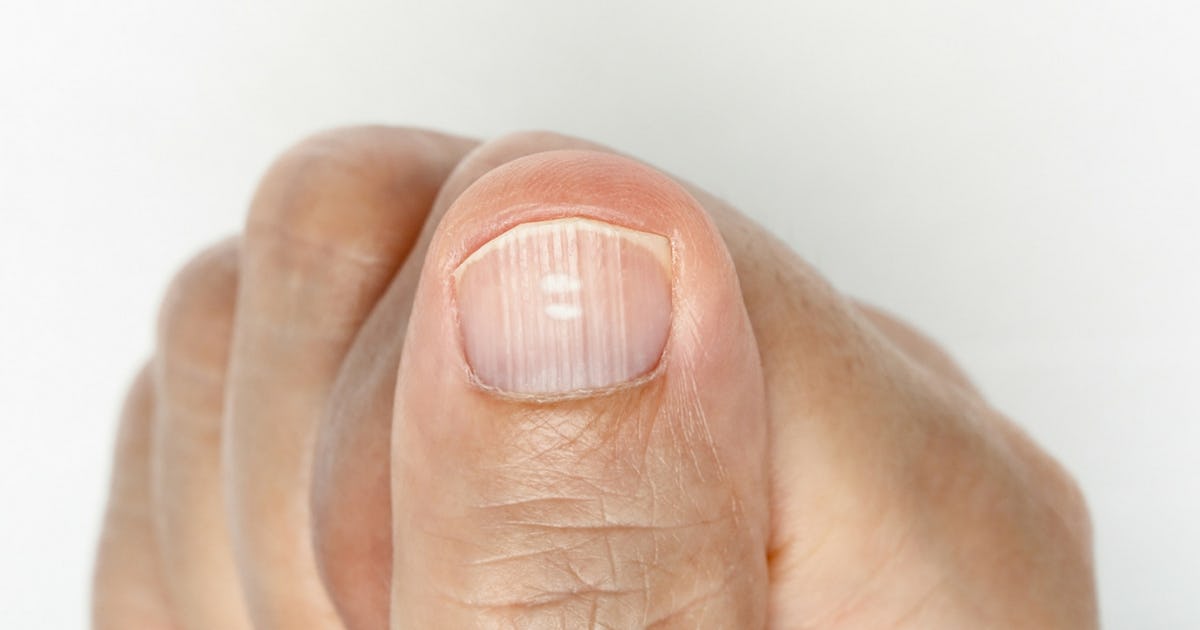 imagesource/scarymom
imagesource/scarymom"They can be down to injury or micro trauma to the nail such as hitting it against a hard surface or bending but not breaking the nail," she says. "This is not a cause for alarm in healthy individuals. Simply wait for the spot to grow out and then clip it off." In rare cases if nails go entirely white, it can be a sign of Leukonychia.
Advertisement
33. If Your Toe Nails Have Gone Black
 imagesource/torbayfootcareBlack nails are usually a sign of trauma. 'The bleeding underneath means that the nail appears black,' the podiatrist explains. 'This will normally grow out on its own, but if it does not then it may be a sign of a more serious issue.'
imagesource/torbayfootcareBlack nails are usually a sign of trauma. 'The bleeding underneath means that the nail appears black,' the podiatrist explains. 'This will normally grow out on its own, but if it does not then it may be a sign of a more serious issue.'Advertisement
34. Small Cysts That Grow Near Your Cuticle
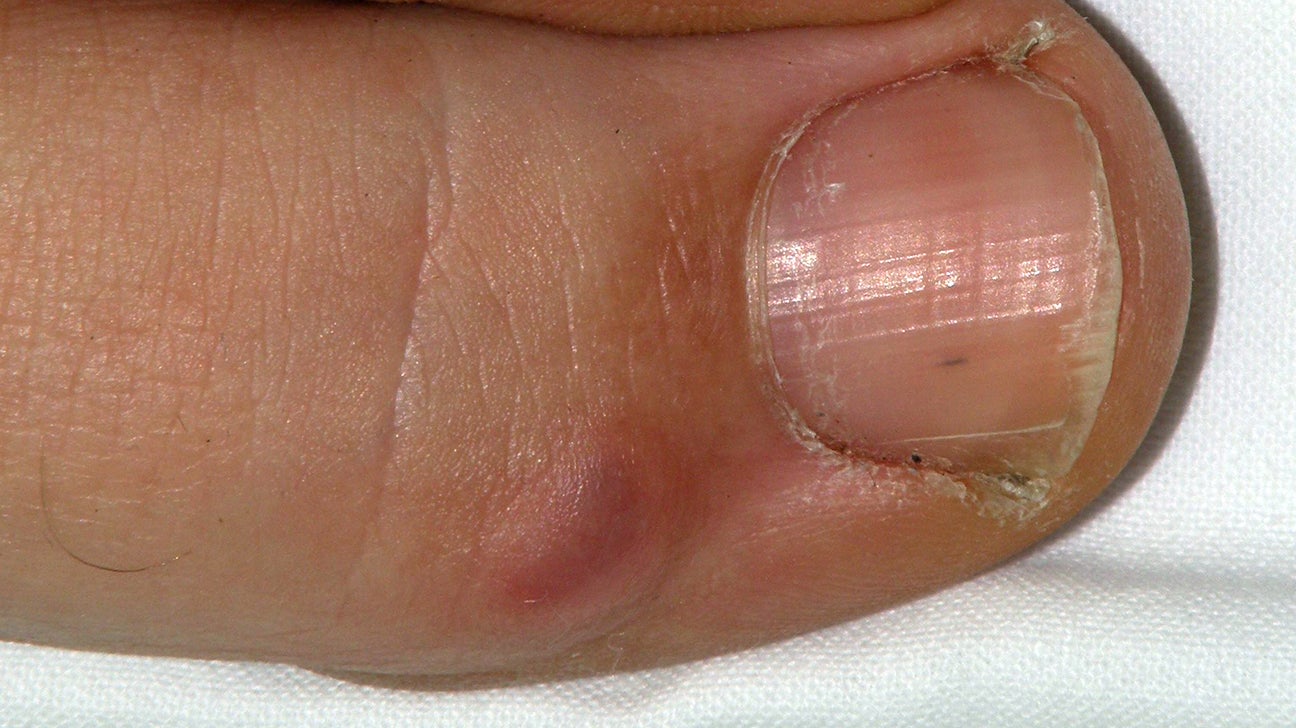 imagesource/medicalnewstodayIf you've found a small cyst growing near or on the cuticles this may be an indication of arthritis. These cysts can be benign (not cencerous) but it's always best to address any health care professionals if you find any changes on your body. No matter how big or small.
imagesource/medicalnewstodayIf you've found a small cyst growing near or on the cuticles this may be an indication of arthritis. These cysts can be benign (not cencerous) but it's always best to address any health care professionals if you find any changes on your body. No matter how big or small.Advertisement
35. Scaly Red Patches That Impact Your Fingers Or Toes
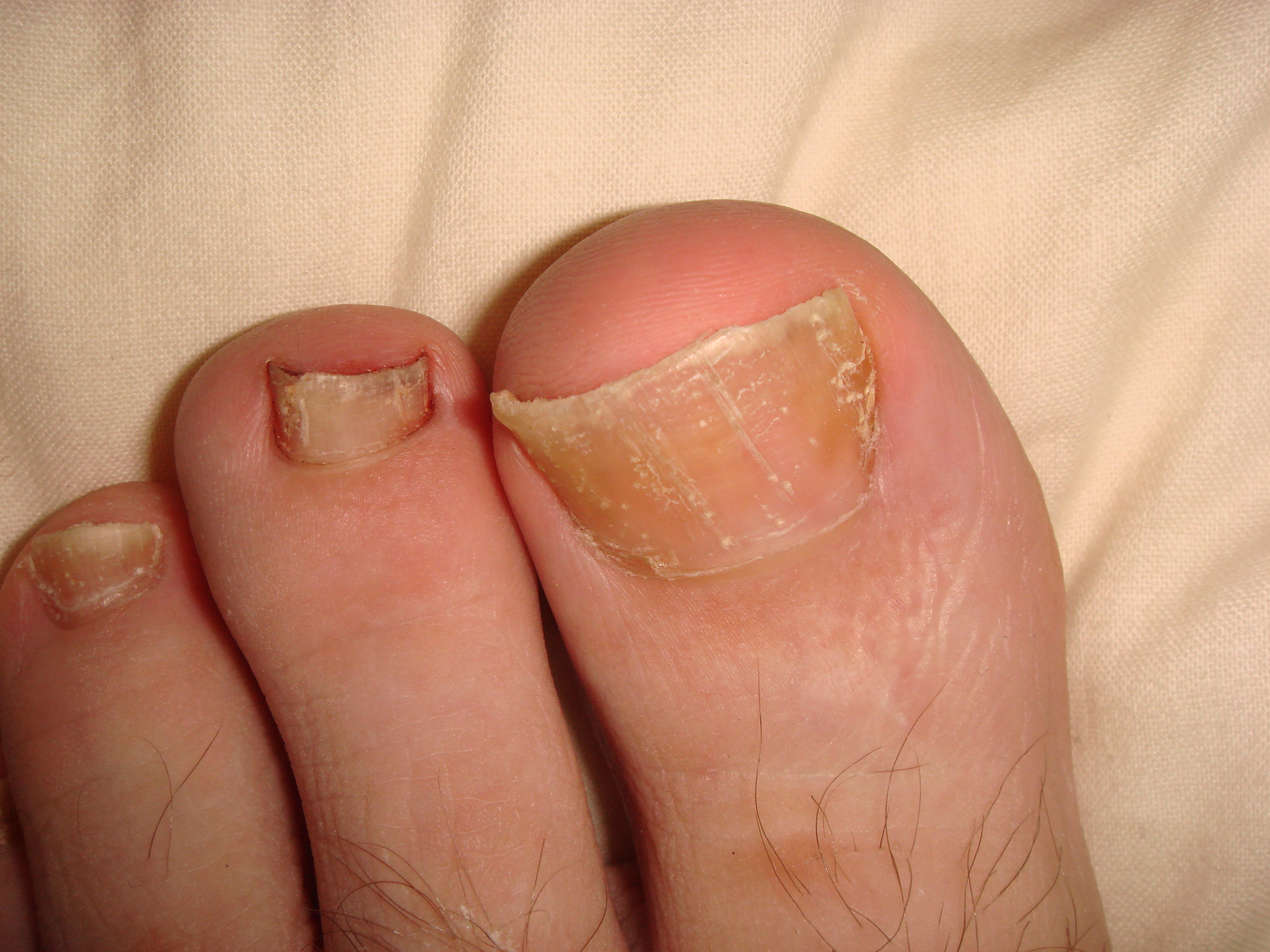 imagesource/Having scaly, red patches around your nails can sometime point to Psoriasis. Consult your doctor or dermatologist - other symptoms of psoriasis are indentations, beau's lines, skin thickening, white areas, black lines and redness.
imagesource/Having scaly, red patches around your nails can sometime point to Psoriasis. Consult your doctor or dermatologist - other symptoms of psoriasis are indentations, beau's lines, skin thickening, white areas, black lines and redness.Advertisement
36. Smelly Feet
 imagesource/refinery29Everyone get smelly feet from time to time, it's normal when you think that your feet have over a quarter of a million sweat glands. But when your feet constantly smell or that you can put them in a pair of shoes and they smell will linger it can mean that you have a fungal infection.
imagesource/refinery29Everyone get smelly feet from time to time, it's normal when you think that your feet have over a quarter of a million sweat glands. But when your feet constantly smell or that you can put them in a pair of shoes and they smell will linger it can mean that you have a fungal infection.Advertisement
37. Cramping In Your Feet
 imagesource/youtubeCramping tends to be relatively harmless so theres usually no need to worry. “If your calves or balls of your feet are cramping, you might have a nutritional deficiency, like a lack of sodium, potassium or magnesium,” Podiatrist, Bodell says.
imagesource/youtubeCramping tends to be relatively harmless so theres usually no need to worry. “If your calves or balls of your feet are cramping, you might have a nutritional deficiency, like a lack of sodium, potassium or magnesium,” Podiatrist, Bodell says.Advertisement
38. Swollen Or Sore Feet
 imagesource/medicalnewstodaySwollen or sore feet can be the first signs of rheumatoid arthritis so if you aren't pregnant, been in hot weather or sat on a long flight, keep an eye out on them. Swelling can occur due to “a build up of fluid in your tissues due to a lack of movement, circulatory problems or kidney and liver issues”.
imagesource/medicalnewstodaySwollen or sore feet can be the first signs of rheumatoid arthritis so if you aren't pregnant, been in hot weather or sat on a long flight, keep an eye out on them. Swelling can occur due to “a build up of fluid in your tissues due to a lack of movement, circulatory problems or kidney and liver issues”.Advertisement
39. Crumbly Nails
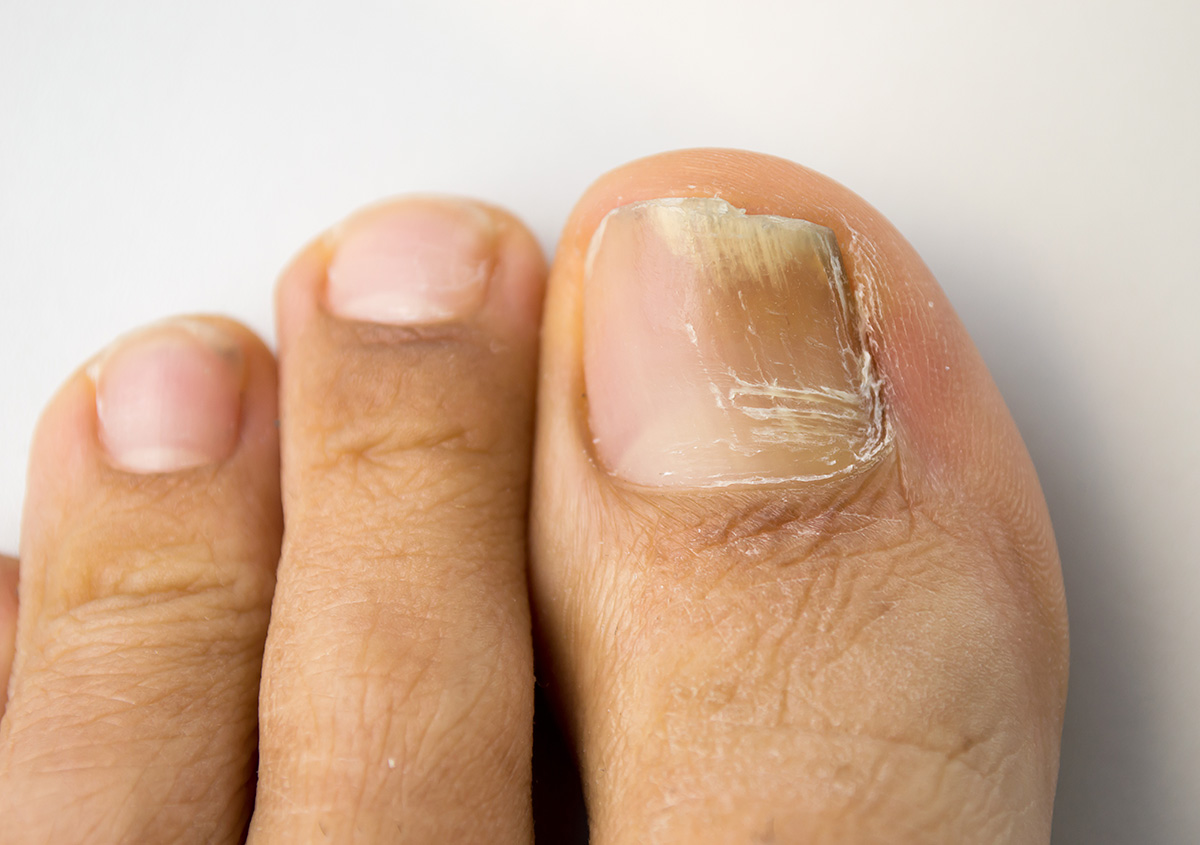 imagesource/diamondskincareToenails that are discoloured and crumbly can often be a sign of fungal infection but if the infection is at the nail bed it could mean that your toe has experienced some trauma to the area. Treatment can be found at that pharmacy with an oral or topical anti-fungal.
imagesource/diamondskincareToenails that are discoloured and crumbly can often be a sign of fungal infection but if the infection is at the nail bed it could mean that your toe has experienced some trauma to the area. Treatment can be found at that pharmacy with an oral or topical anti-fungal.Advertisement
40. Spoon Shaped Nails
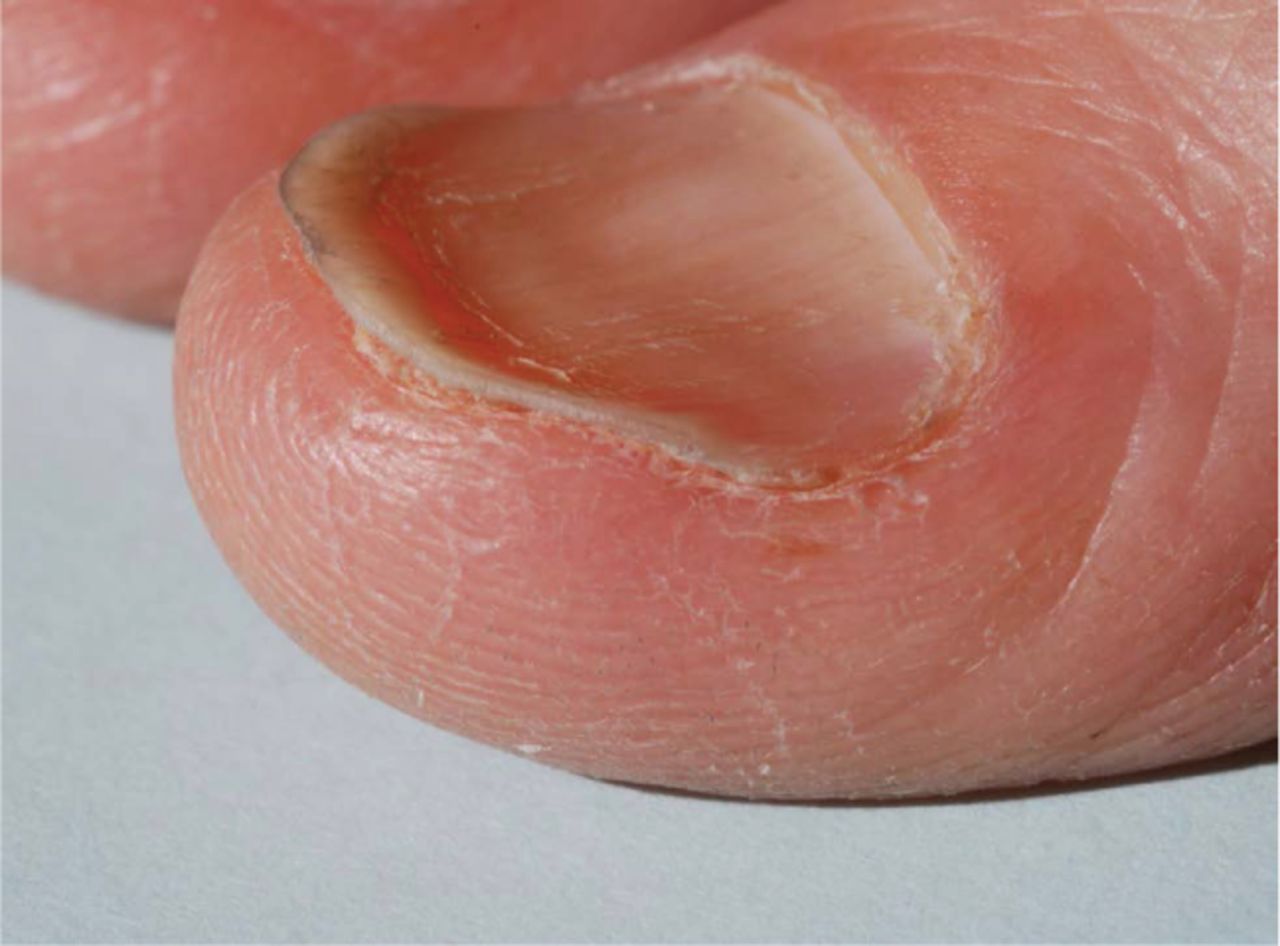 imagesource/RCPjournalsIn this case, the nail resembles the shape of a spoon and becomes concave. Spoon shaped nails are usually a sign that you've got an iron deficiency/anaemia. If you notice you toenails changing shape or colour, always keep an eye on them and visit the doctors if the change is sudden.
imagesource/RCPjournalsIn this case, the nail resembles the shape of a spoon and becomes concave. Spoon shaped nails are usually a sign that you've got an iron deficiency/anaemia. If you notice you toenails changing shape or colour, always keep an eye on them and visit the doctors if the change is sudden.Advertisement
41. Here's What Your Feet Say About Your Personality
 imagesource/healthlineEveryone has different shaped feet, but there are numerous types of shaped feet and they all have special meanings behind them. Carry on reading to find out what the shape of your foot actually says about your personality...
imagesource/healthlineEveryone has different shaped feet, but there are numerous types of shaped feet and they all have special meanings behind them. Carry on reading to find out what the shape of your foot actually says about your personality...Advertisement
42. The Egyptian Toes
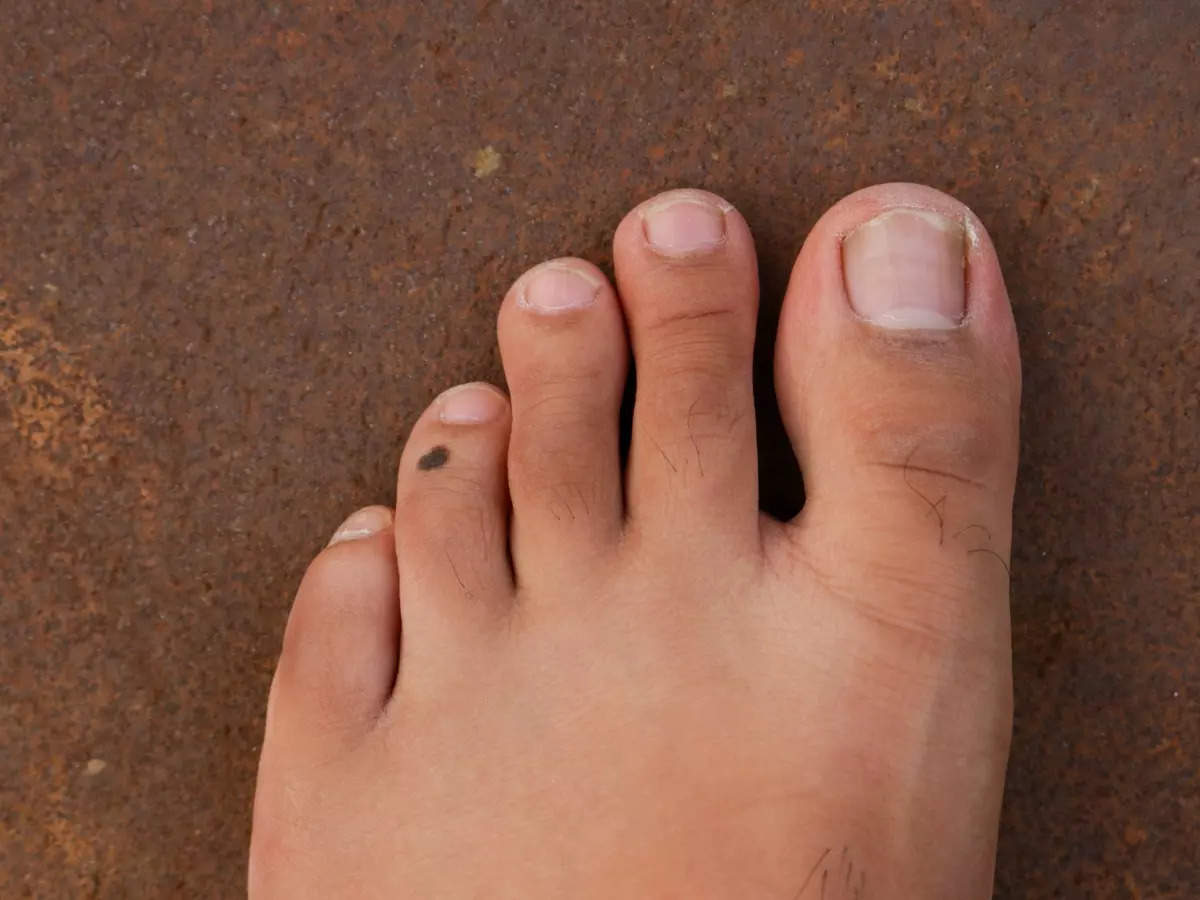 imagesource/timesofindiaOne of the most general foot shapes is the Egyptian Toe, A.K.A. ''The Stretched Foot'' and is a fairly common foot type which is characterised by the big toe being the largest, and the rest of the toes tapering off at a 45 degree angle. Do you have this foot shape?
imagesource/timesofindiaOne of the most general foot shapes is the Egyptian Toe, A.K.A. ''The Stretched Foot'' and is a fairly common foot type which is characterised by the big toe being the largest, and the rest of the toes tapering off at a 45 degree angle. Do you have this foot shape?Advertisement
43. The Roman Toes
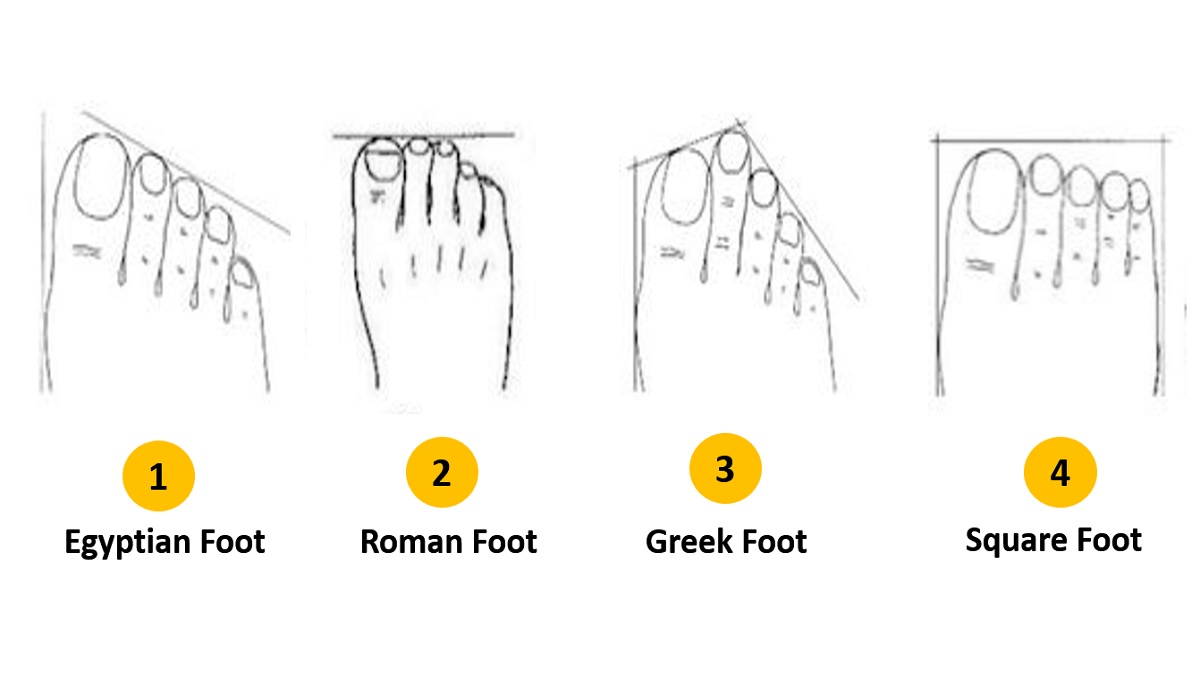 imagesource/jarganjoshIf your first three toes are the same height and the last two are in descending order then you have what is known as the Roman Foot! People with this foot shape are usually outgoing and positive as well as being passionate especially when it comes to exploring.
imagesource/jarganjoshIf your first three toes are the same height and the last two are in descending order then you have what is known as the Roman Foot! People with this foot shape are usually outgoing and positive as well as being passionate especially when it comes to exploring.Advertisement
44. Peasant Toes
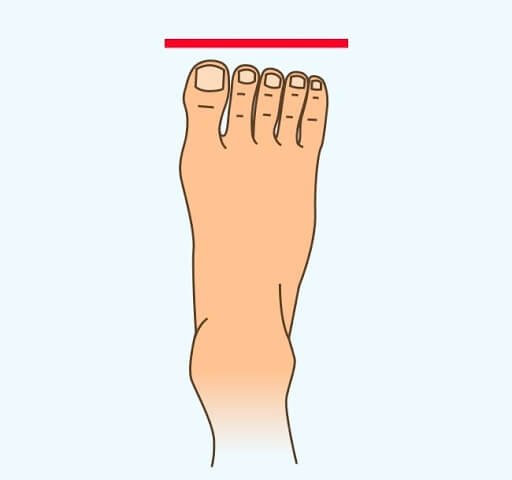 imagesource/hopytapyPeasant Toes, sometimes known as ''Square Feet'' are when the toes are all practically the same length which gives a "square-like" appearance. The people with this shape foot tend to be rational and reliable. They're great people to have around you!
imagesource/hopytapyPeasant Toes, sometimes known as ''Square Feet'' are when the toes are all practically the same length which gives a "square-like" appearance. The people with this shape foot tend to be rational and reliable. They're great people to have around you!Advertisement
45. Flame Toes
 imagesource/pintrestThe Flame, or Greek foot is when the second toe exceeds the length of the big toe, and all the other toes. Those with flame toes tend to be natural born leaders who rarely get stressed out and glide their way through difficult situations.
imagesource/pintrestThe Flame, or Greek foot is when the second toe exceeds the length of the big toe, and all the other toes. Those with flame toes tend to be natural born leaders who rarely get stressed out and glide their way through difficult situations.Advertisement
46. Inability To Separate The Little Toe
 imagesource/capoeiraSolely about whether or not you can separate your little toe without the help from your hands/tools. It means that you are a loyal companion who loves having a routine to follow & if you can't separate your littlest toe without the help of a handy tool it's really nothing to worry about.
imagesource/capoeiraSolely about whether or not you can separate your little toe without the help from your hands/tools. It means that you are a loyal companion who loves having a routine to follow & if you can't separate your littlest toe without the help of a handy tool it's really nothing to worry about.Advertisement
47. Ability To Separate The Little Toe
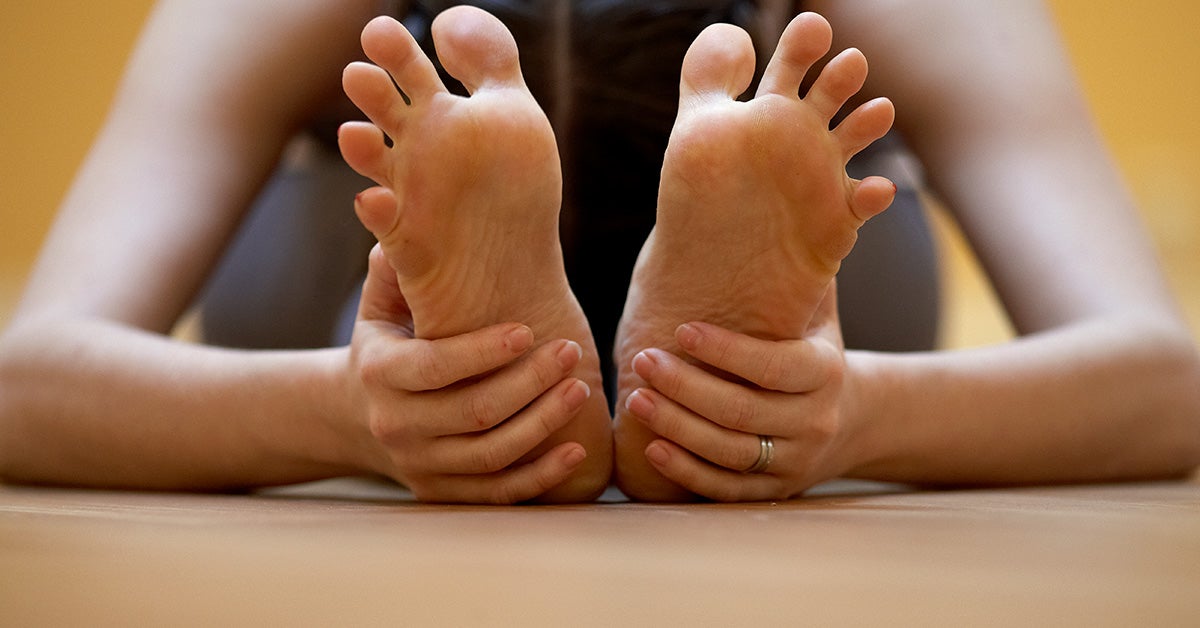 imagesource/healthlineAs you might have already guessed, those that have the ability to separate their smallest toes have completely opposite personalities to those who can't! They're more free spirited and laid back with more of a care free attitude towards life.
imagesource/healthlineAs you might have already guessed, those that have the ability to separate their smallest toes have completely opposite personalities to those who can't! They're more free spirited and laid back with more of a care free attitude towards life.Advertisement
48. An Extra Small Toe
 imagesource/redditSimilarly to the Egyptian Toe, the only difference here is that the pinky toe is smaller than usual. People with this shaped foot tend to be quite secretive when it comes to their personal lives, they keep their cards close to their chest and take a while to really open up.
imagesource/redditSimilarly to the Egyptian Toe, the only difference here is that the pinky toe is smaller than usual. People with this shaped foot tend to be quite secretive when it comes to their personal lives, they keep their cards close to their chest and take a while to really open up.Advertisement
49. Wide Set Toes
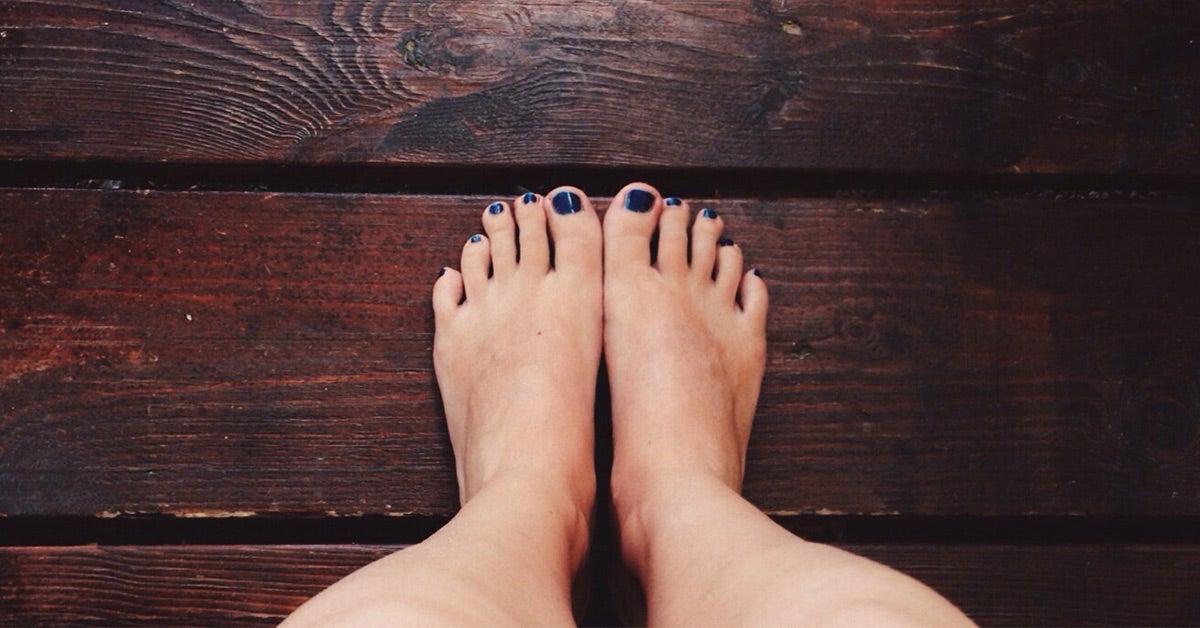
Advertisement
50. Stretched Toes
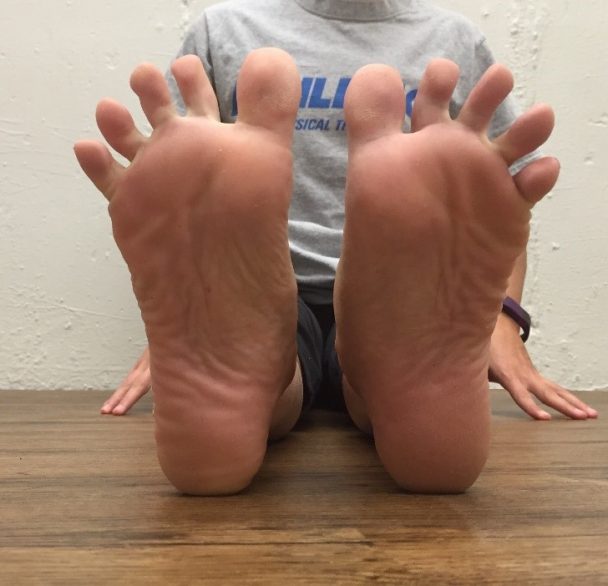 imagesource/athleticopysicalNot to be confused with the Egyptian Toe, stretched toes are when the big toe is clearly distanced from all the other toes. Very independent and love doing things for themselves, people with this foot shape also hate being indoors & told what to do.
imagesource/athleticopysicalNot to be confused with the Egyptian Toe, stretched toes are when the big toe is clearly distanced from all the other toes. Very independent and love doing things for themselves, people with this foot shape also hate being indoors & told what to do.Advertisement
51. Want More Crazy Facts About Your Feet? The human foot contains 26 bones
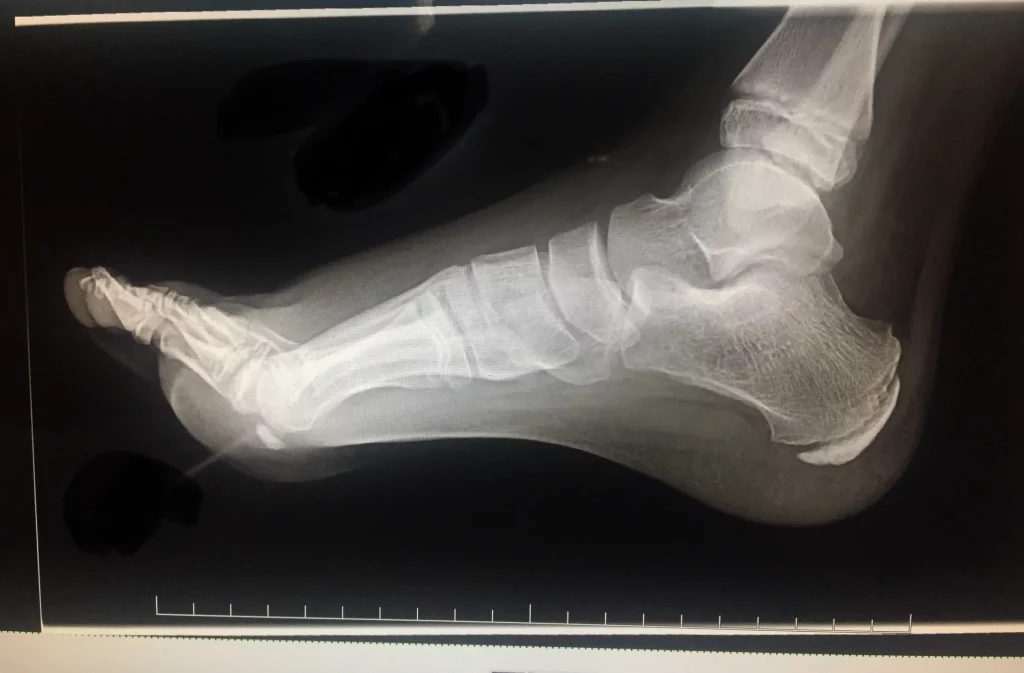 image source: reddit.com
image source: reddit.com
The human foot is an intricate structure comprised of 26 bones, 33 joints, and an elaborate network of more than 100 muscles, tendons, and ligaments. This complexity allows for a remarkable range of motion and flexibility. The 26 bones are organized into three main sections: the hindfoot, midfoot, and forefoot.Advertisement
52. The average person takes between 8,000-10,000 steps a day
 image source: reddit.com
image source: reddit.com
On an average day, a person takes approximately 8,000 to 10,000 steps, highlighting the incredible mobility and endurance of the human foot. This constant physical activity helps maintain overall health and contributes to cardiovascular fitness.Advertisement
53. There are around 250,000 sweat glands in your feet
image source: reddit.com
The feet boast an impressive network of sweat glands, making them the most perspiring part of the body. Each foot houses around 250,000 sweat glands, contributing to the regulation of body temperature and moisture levels. Sweating in the feet is a natural physiological response, but it can also lead to issues such as foot odor.Advertisement
54. Your feet can change size throughout the day
image source: reddit.com
Throughout the course of a day, feet can undergo changes in size due to swelling, causing them to expand by up to half a shoe size. This phenomenon is influenced by factors such as temperature, activity level, and circulatory patterns. Swelling, known as edema, can be a result of prolonged standing, certain medical conditions, or dietary choices.Advertisement
55. The pressure on your feet whilst running can be four times your body weight
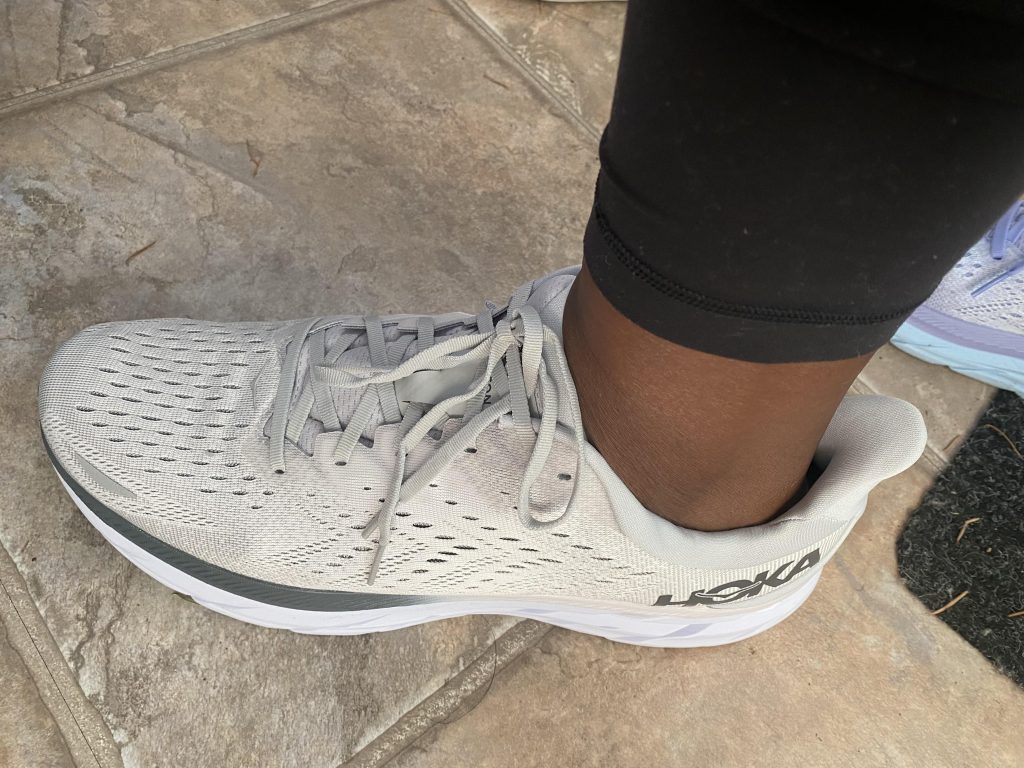 image source: reddit.com
image source: reddit.com
The pressure exerted on the feet during running is a dynamic force that can reach up to four times the individual's body weight. This immense pressure underscores the incredible resilience and strength of the foot's structural components. The foot is equipped with arches and specialized structures to distribute this force.Advertisement
56. The longest recorded toenails ever measured reached over 5 feet in total
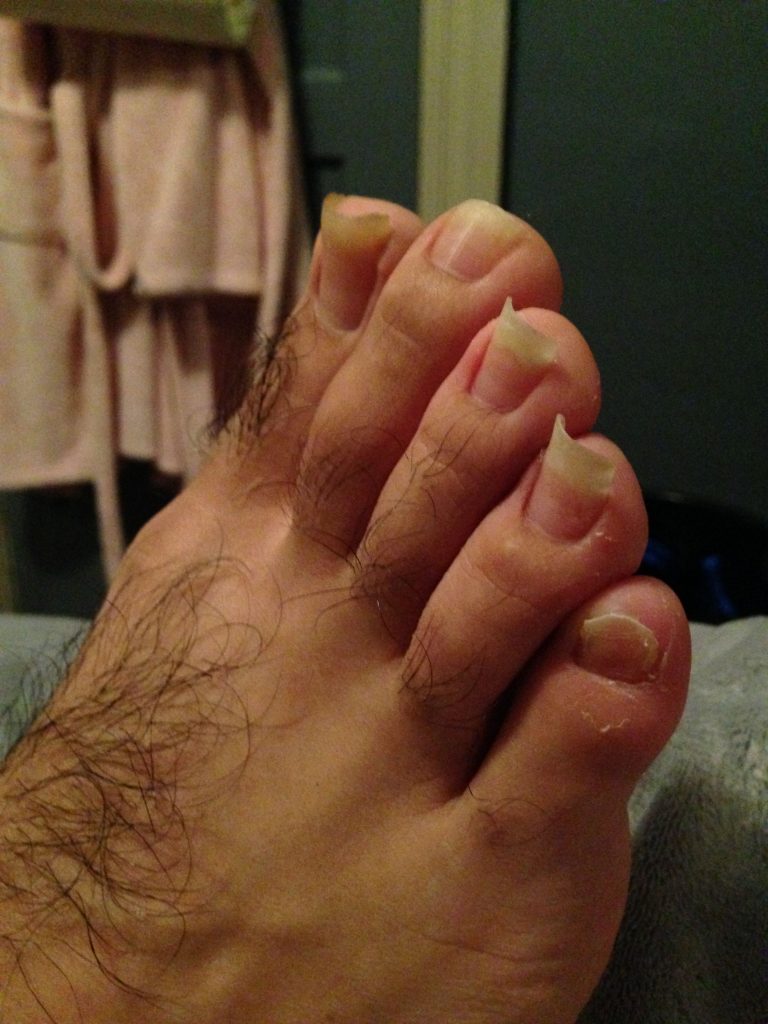 image source: reddit.com
image source: reddit.com
In the realm of unusual human achievements, the record for the longest recorded toenails is nothing short of astonishing, with measurements exceeding 5 feet in total length. This peculiar feat requires a rare combination of dedication, patience, and, undoubtedly, a unique disregard for the conventional norms of personal grooming.Advertisement
57. The world record for the most people massaging feet simultaneously is over 1,000 participants
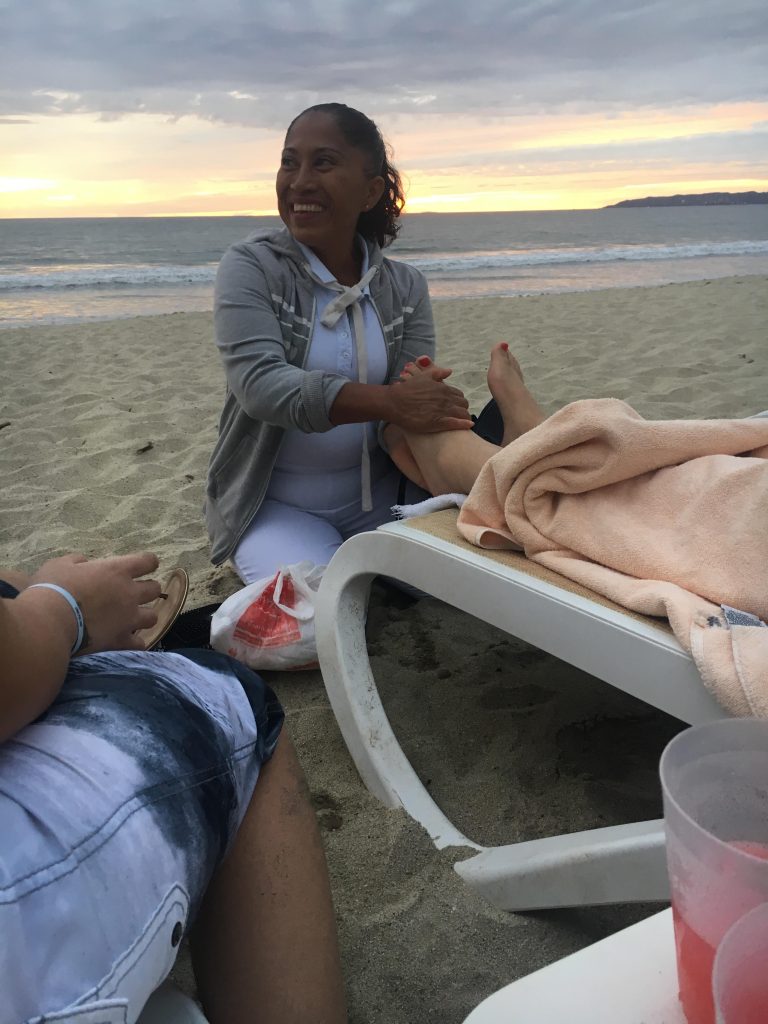 image source: reddit.com
image source: reddit.com
Massaging feet is not only a pleasurable activity but can also be a communal endeavor, as demonstrated by the impressive world record for the most people massaging feet simultaneously—surpassing the 1,000 participants mark. This collective effort reflects a shared appreciation for the therapeutic benefits of foot massage, promoting relaxation.Advertisement
58. Footprints are like fingerprints
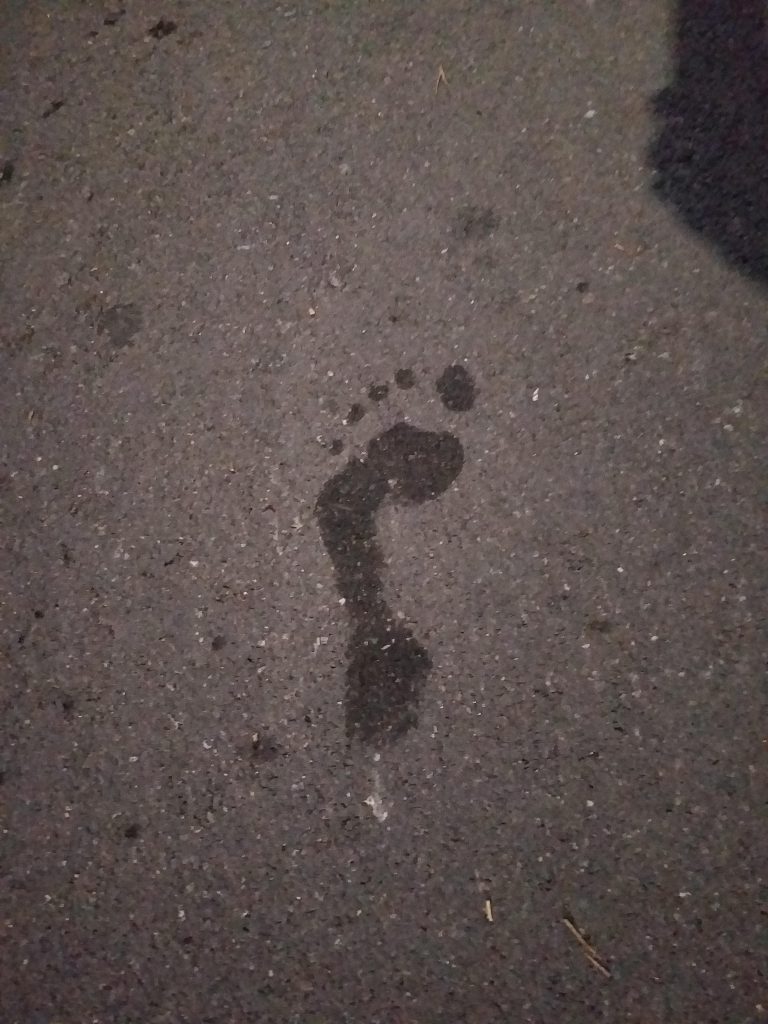 image source: reddit.com
image source: reddit.com
Footprints, like fingerprints, are unique to each individual, forming a distinct pattern of ridges and lines on the soles of the feet. This uniqueness arises from a combination of genetic factors and environmental influences, making each person's footprints an identifiable and personal marker.Advertisement
59. The Achilles tendon is the largest tendon in the human body
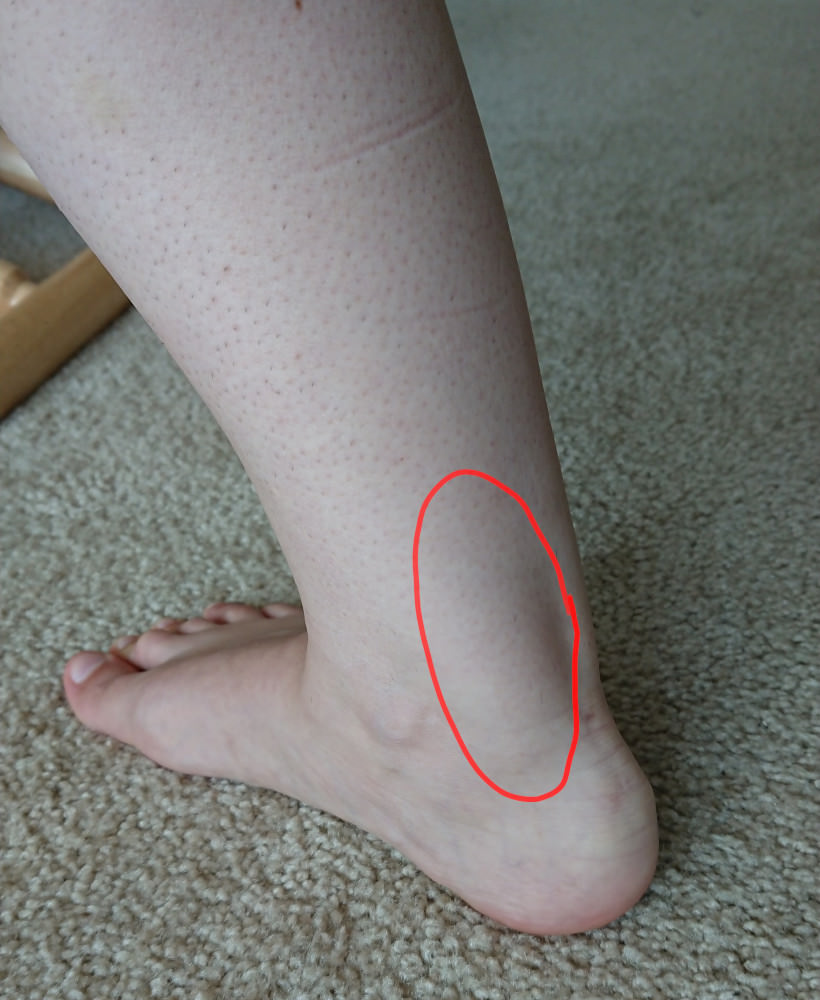 image source: reddit.com
image source: reddit.com
The Achilles tendon, named after the legendary Greek hero Achilles, is the largest tendon in the human body, connecting the calf muscles to the heel bone. This robust and sinewy structure plays a pivotal role in facilitating essential movements such as walking, running, and jumping.Advertisement
60. The average person will walk around 110,000 miles in a lifetime
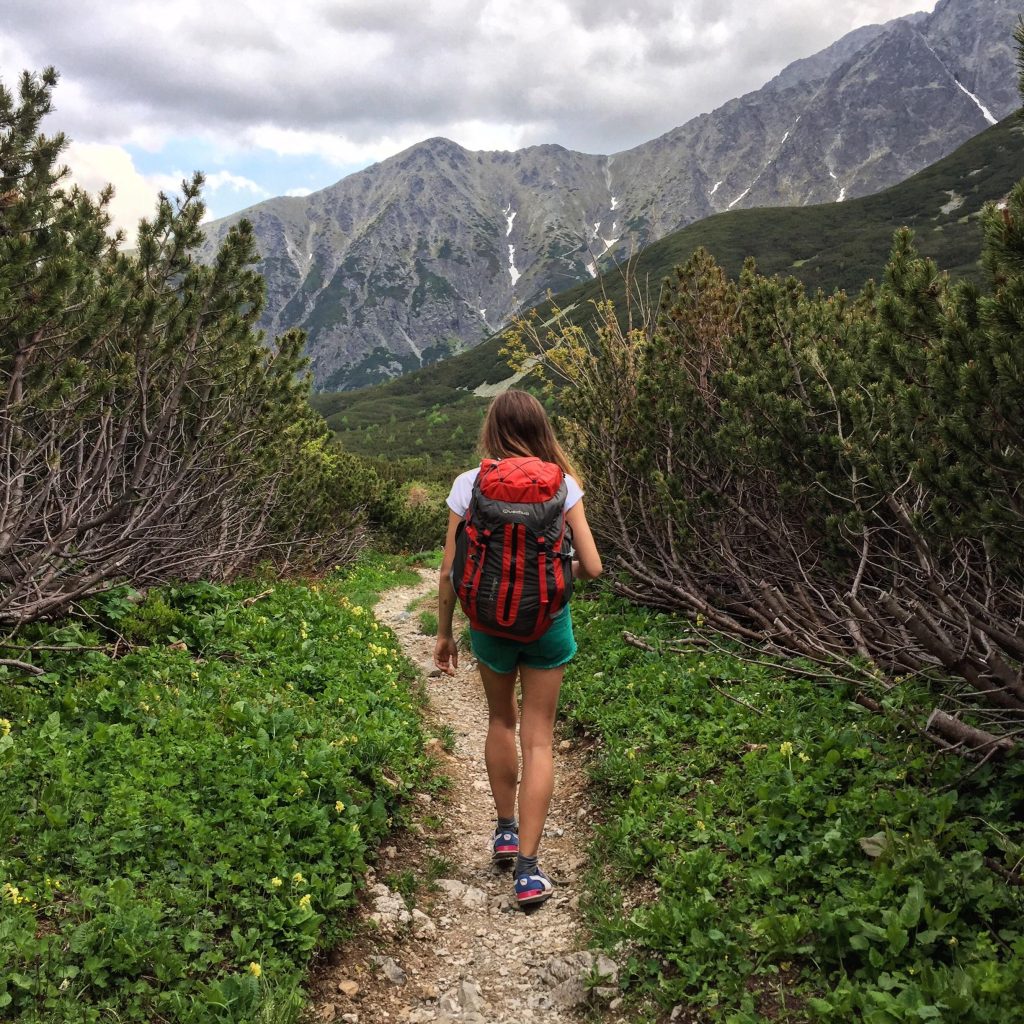 image source: reddit.com
image source: reddit.com
Over the course of a lifetime, the average person will cover an astonishing distance on foot—approximately 110,000 miles. This impressive statistic emphasizes the incredible endurance and resilience of the human body. Walking, a seemingly simple and everyday activity, becomes a cumulative journey that spans decades.Advertisement
61. Ancient Egyptians often went barefoot
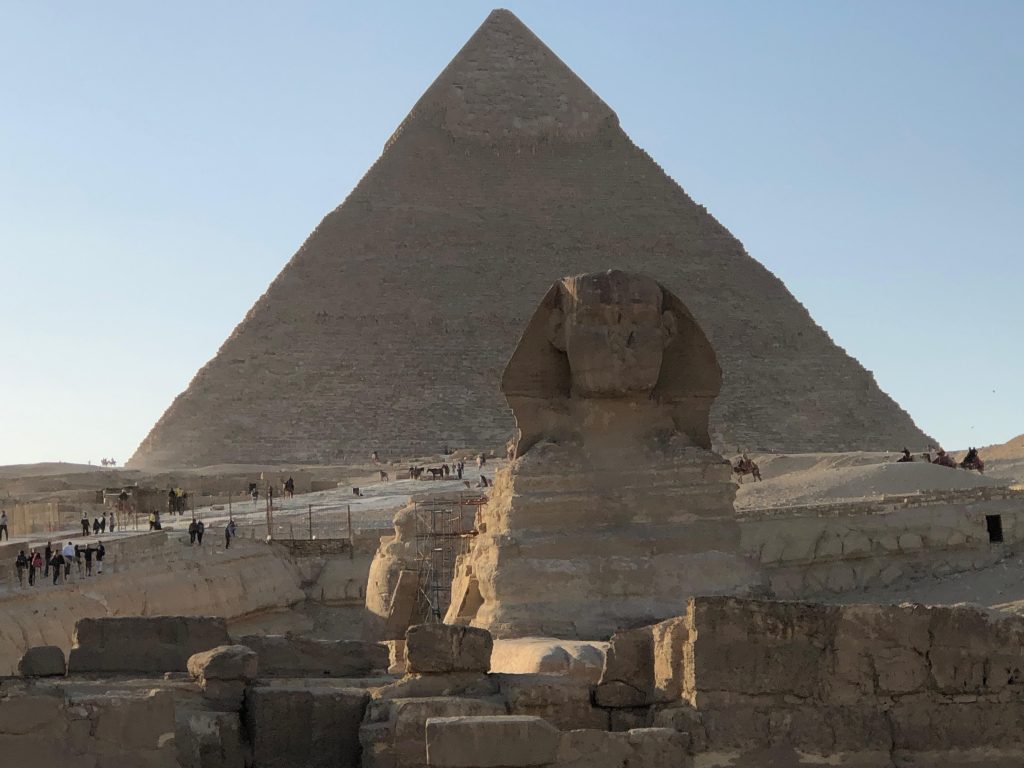 image source: reddit.com
image source: reddit.com
In ancient Egypt, the choice of footwear reflected both practical considerations and societal norms. It was customary for many Egyptians to go barefoot in their daily lives, particularly given the predominantly warm climate and the prevalence of sandy terrain.Advertisement
62. Reflexology is a practice that involves applying pressure to specific points on the feet
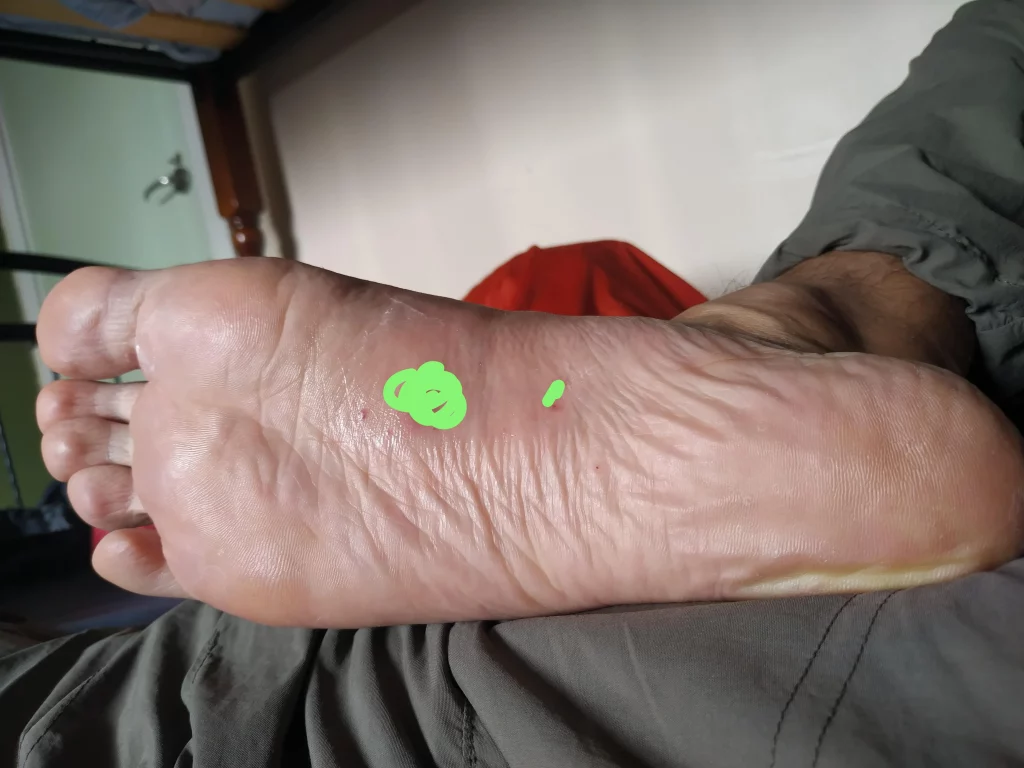 image source: reddit.com
image source: reddit.com
Reflexology, an ancient healing practice rooted in traditional Chinese medicine and ancient Egyptian practices, involves the application of pressure to specific points on the feet to stimulate corresponding areas of the body and promote overall well-being.Advertisement
63. The study of feet is called podiatry
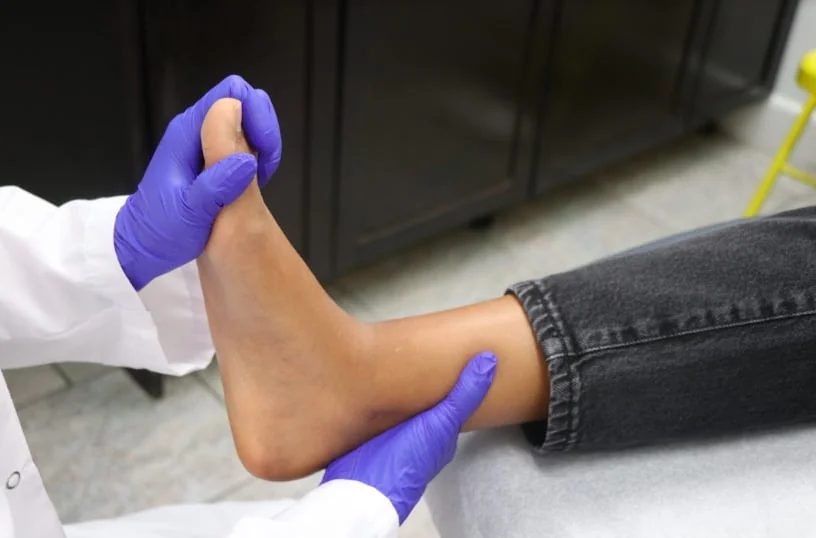 image source: reddit.com
image source: reddit.com
The specialized field devoted to the study and medical care of feet is known as podiatry. Podiatrists are healthcare professionals trained to diagnose, treat, and prevent conditions and disorders related to the feet, ankles, and lower extremities.Advertisement
64. The world's largest feet are shoe size 28.5
image source: reddit.com
Matthew McGrory, an American actor known for his roles in films like "Big Fish" and "The Devil's Rejects," earned the distinction of having the world's largest feet. With a shoe size of 28.5, his feet measured significantly larger than those of the average person.Advertisement
65. The surprising amount of nerve endings in your feet
 image source: reddit.com
image source: reddit.com
The feet are home to a remarkable concentration of nerve endings, housing more per square centimeter than any other part of the body. This high density of nerve receptors serves various sensory functions, allowing the feet to detect a wide range of stimuli.Advertisement
66. About 25% of the bones in the human body are in the feet
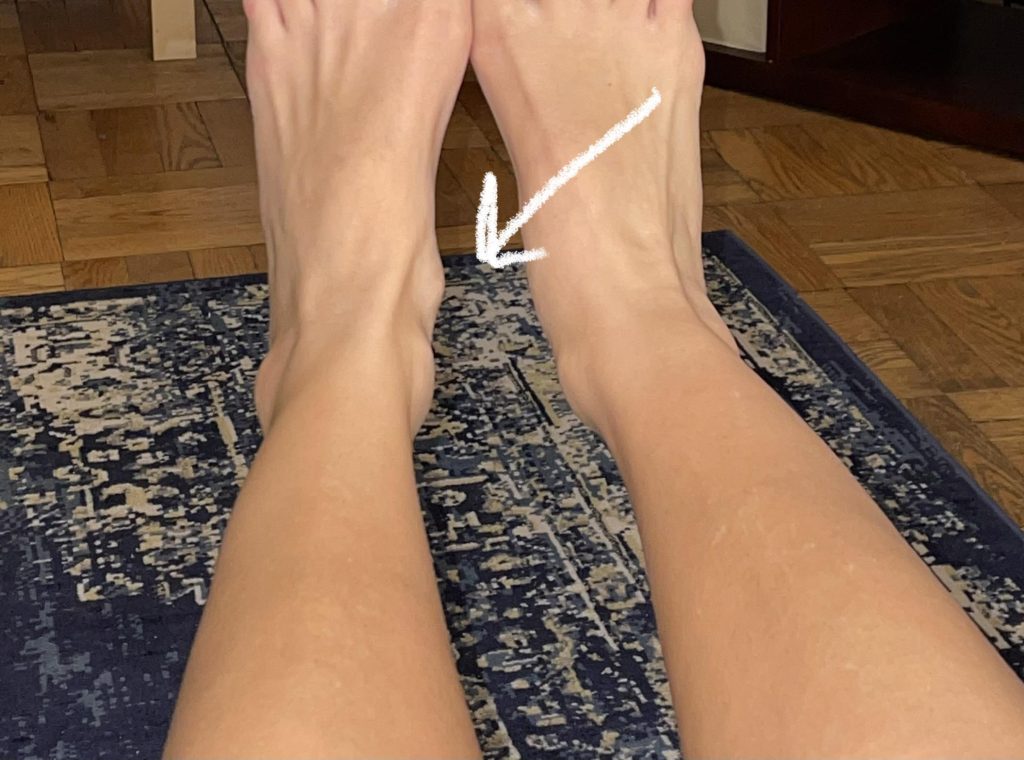 image source: reddit.com
image source: reddit.com
Remarkably, approximately 25% of the bones in the human body are housed within the feet, underscoring the structural complexity and significance of these lower extremities. The 26 bones in each foot work in concert to provide a foundation for weight-bearing activities, offering stability, flexibility, and support for the entire body.Advertisement
67. The arches of the feet may not fully form until the age of 18
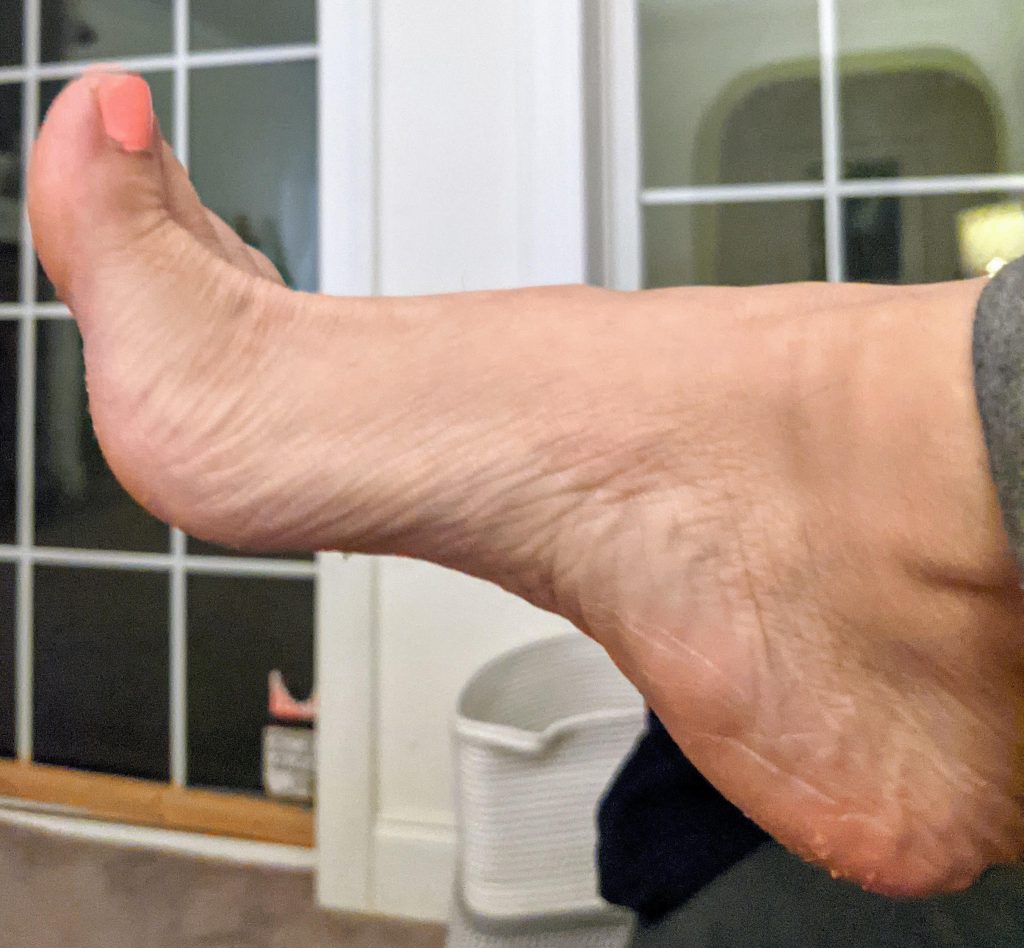 image source: reddit.com
image source: reddit.com
The development of the arches in the feet is a fascinating aspect of human anatomy that unfolds during childhood and adolescence. Although babies are born with a relatively flat foot structure, arches begin to take shape as the child grows and starts to bear weight on their feet.Advertisement
68. The foot is divided into three sections
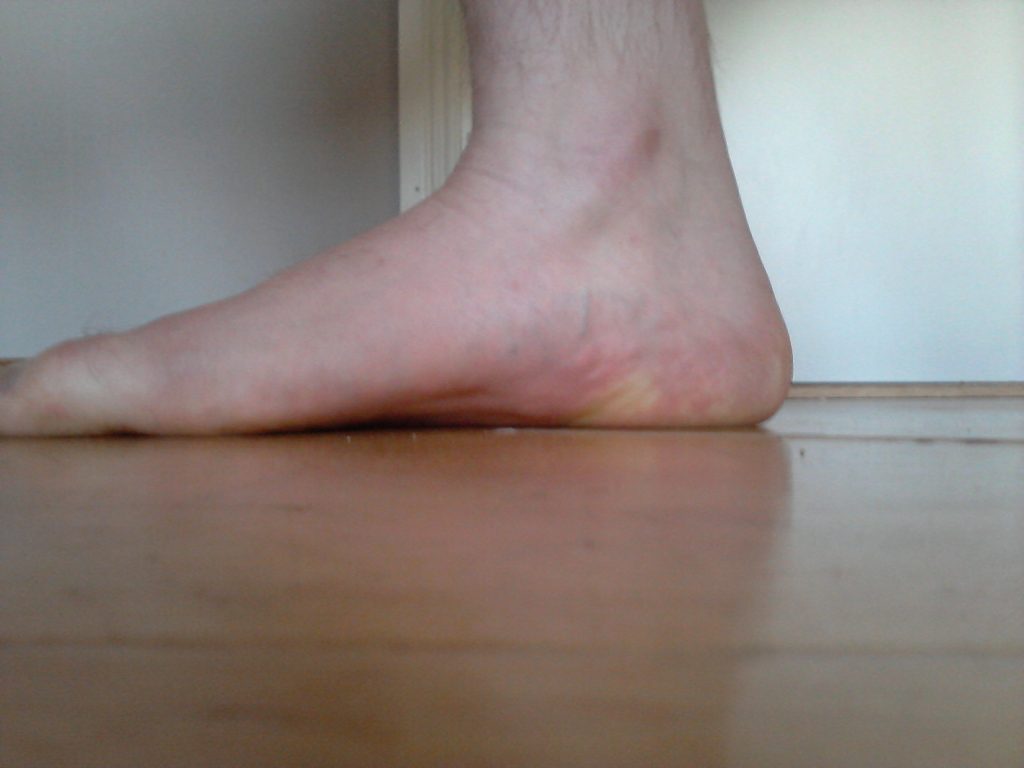 image source: reddit.com
image source: reddit.com
The foot is a marvel of biomechanical engineering, divided into three distinct sections: the forefoot, midfoot, and hindfoot. Each section serves a unique function in supporting weight, facilitating movement, and maintaining balance. The forefoot includes the toes and metatarsals, providing leverage for pushing off during activities like walking.Advertisement
69. The average person loses about 1 pint of sweat through their feet every day
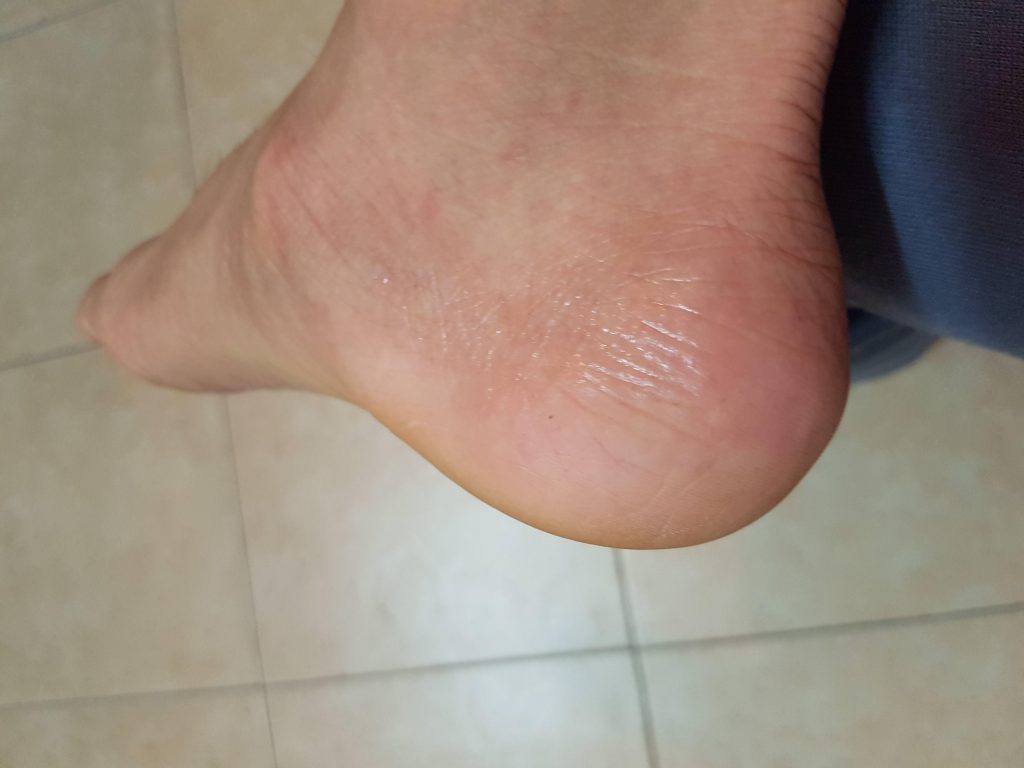 image source: reddit.com
image source: reddit.com
The feet are prodigious producers of sweat, with the average person losing about 1 pint of sweat through their feet every day. This remarkable excretion serves a crucial physiological function, aiding in thermoregulation and preventing overheating.Advertisement
70. The big toe has the most important job
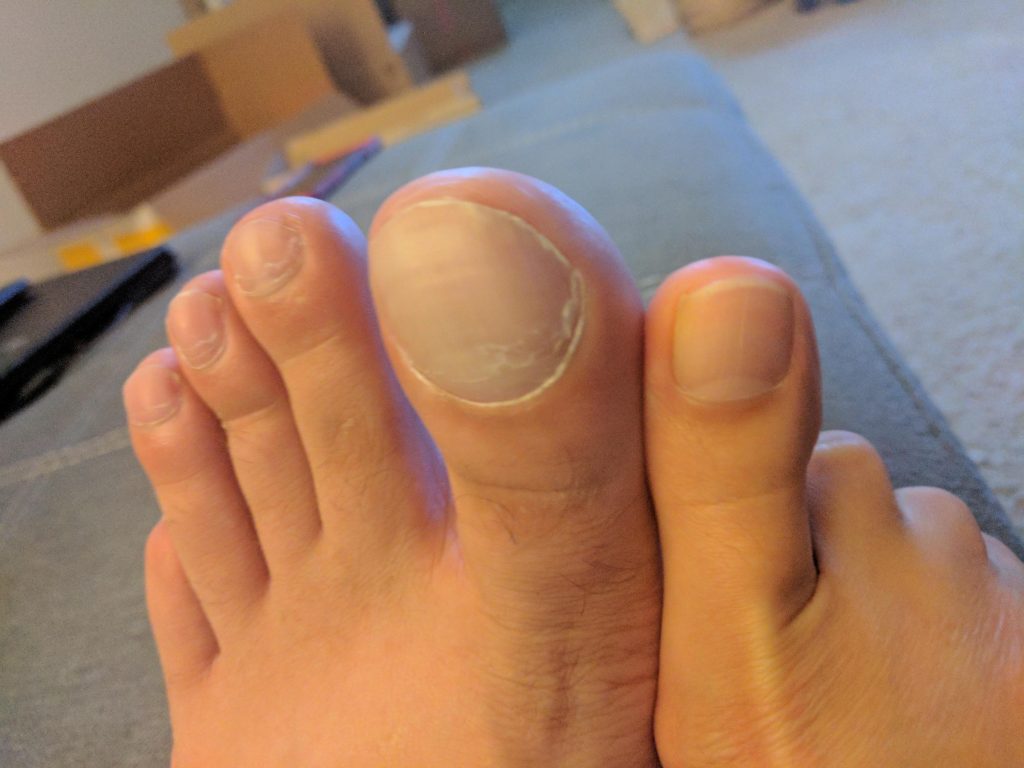 image source: reddit.com
image source: reddit.com
The big toe, or hallux, carries a substantial responsibility in the biomechanics of walking, as it bears the majority of the body's weight during each step. This weight-bearing role is crucial for maintaining balance and propulsion. The big toe plays a pivotal role in the push-off phase of walking, helping propel the body forward.Advertisement
71. Morton's toe affects about 10-20% of the population
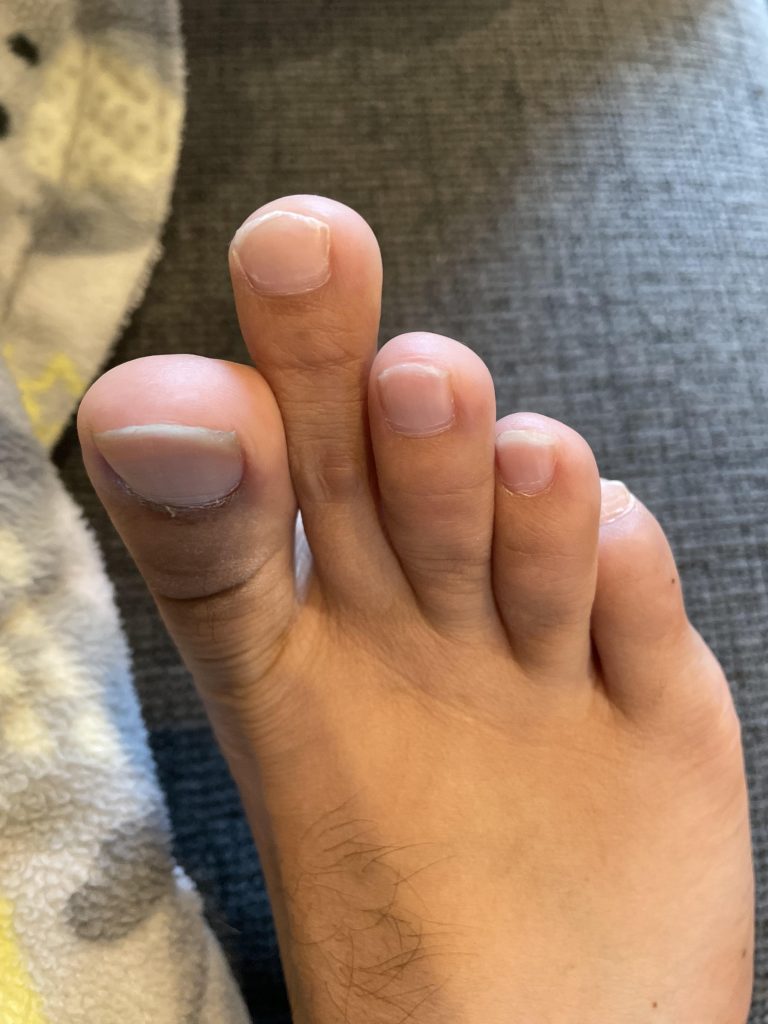 image source: reddit.com
image source: reddit.com
Morton's toe, a common anatomical variation affecting about 10-20% of the population, is characterized by having the second toe longer than the big toe. Named after the American orthopedic surgeon Dudley Morton, who extensively studied foot structure, this condition can influence the distribution of weight across the foot.Advertisement
72. The world's oldest known leather shoe is over 5,500 years old
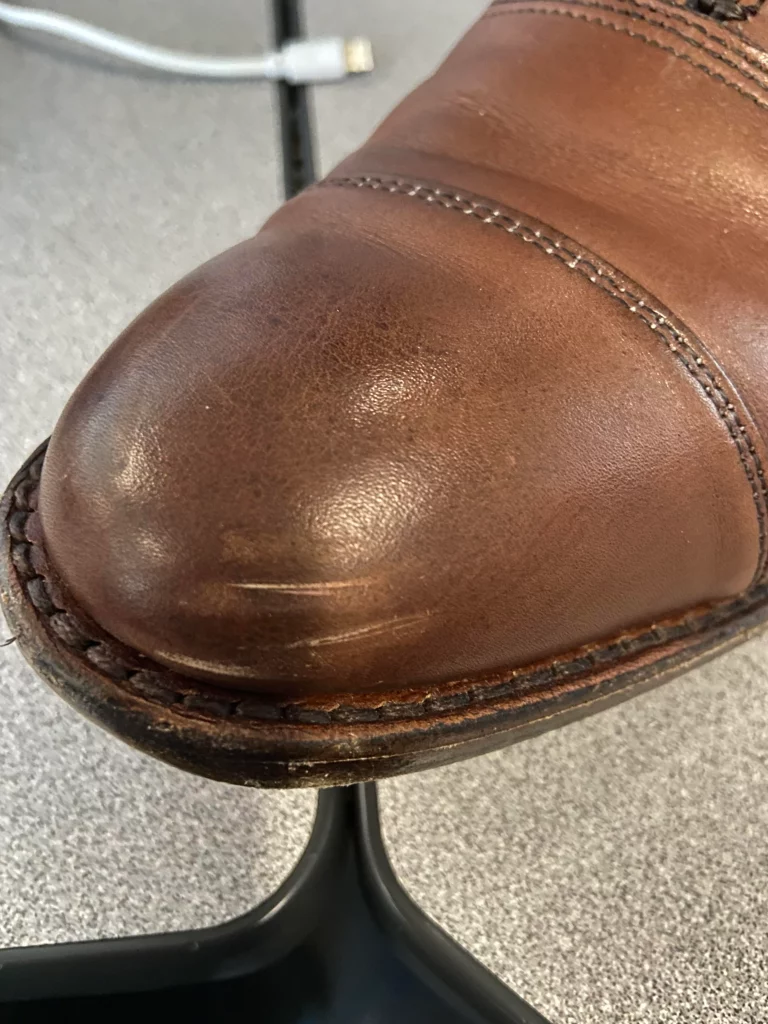 image source: reddit.com
image source: reddit.com
The world's oldest known leather shoe, an archaeological marvel, provides a fascinating glimpse into ancient craftsmanship and human ingenuity. Dating back over 5,500 years, this well-preserved artifact was excavated from a cave in Armenia and is made from a single piece of cowhide.Advertisement
73. Some people have extra toes
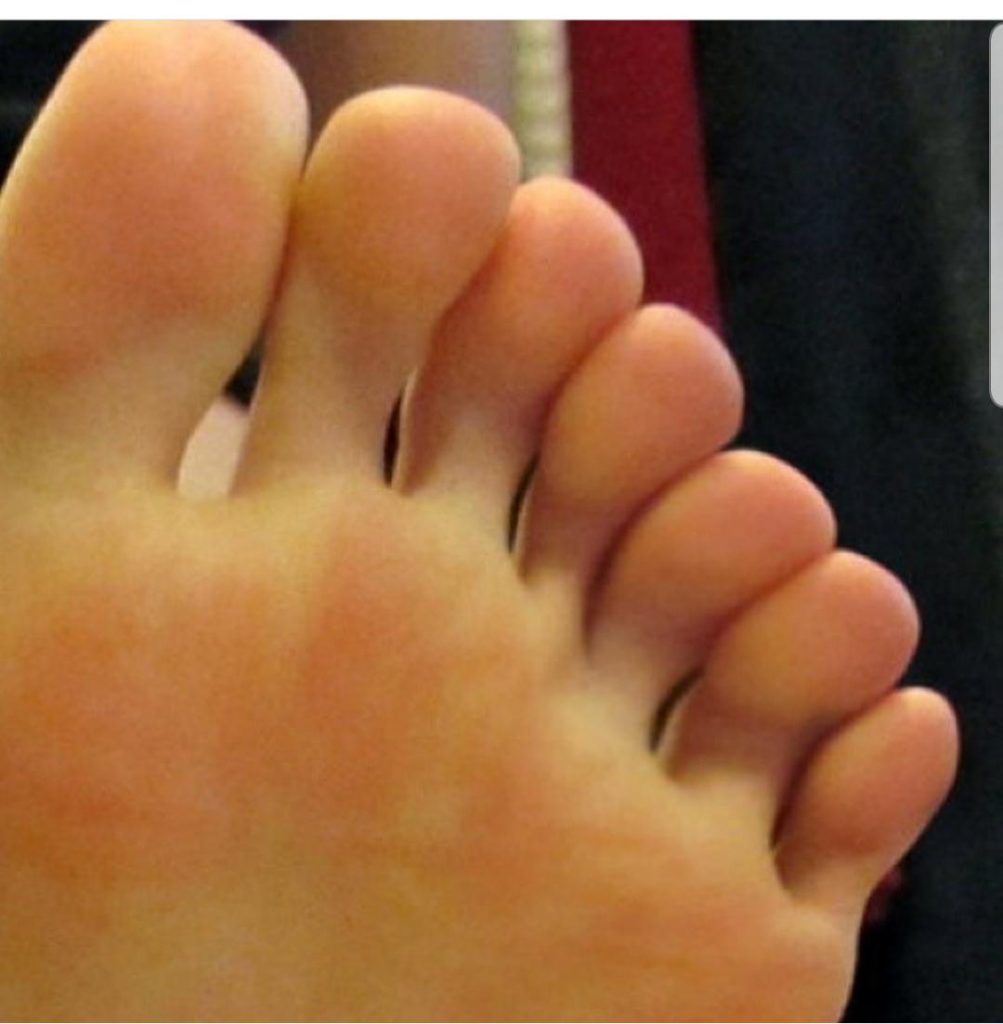 image source: reddit.com
image source: reddit.com
Polydactyly is a rare genetic condition characterized by the presence of extra toes, fingers, or both. This congenital anomaly occurs during fetal development when the digits fail to separate properly. Polydactyly can manifest in various forms, ranging from a small, non-functional extra digit to a fully formed and functional extra toe.Advertisement
74. Footprints on the moon
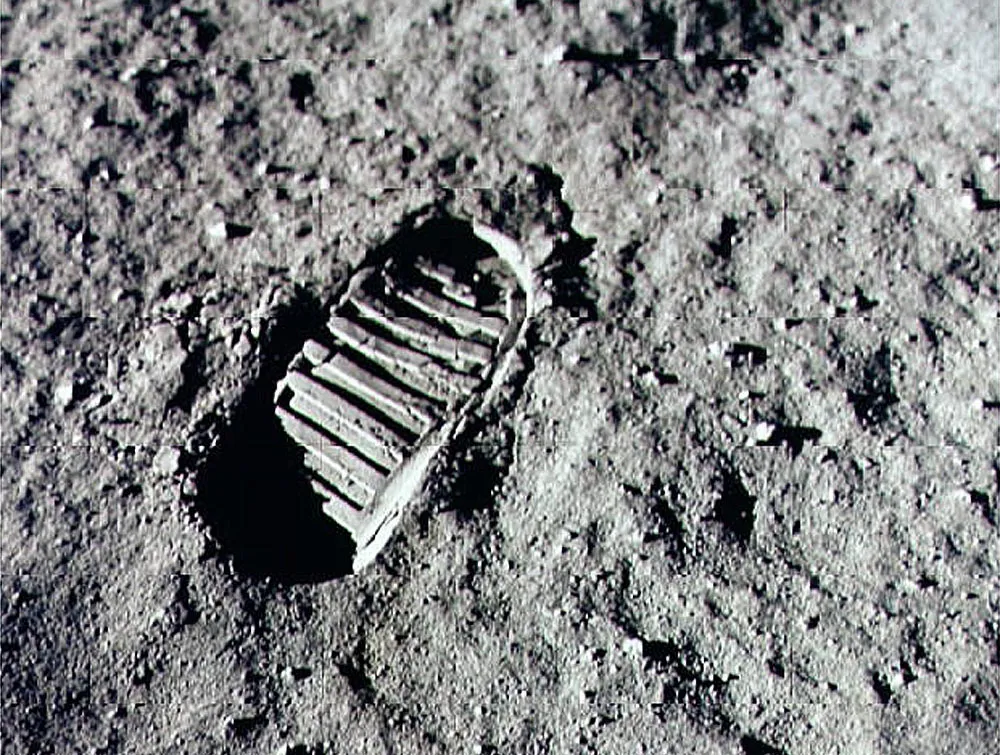 image source: themercurynews.com
image source: themercurynews.com
The footprints left by astronauts on the moon during historic space missions are likely to endure for millions of years due to the absence of wind and erosion in the lunar environment. Unlike on Earth, where wind, water, and other natural elements constantly reshape the landscape, the moon's surface lacks these erosive forces.Advertisement
75. Shoes were never meant to be for fashion
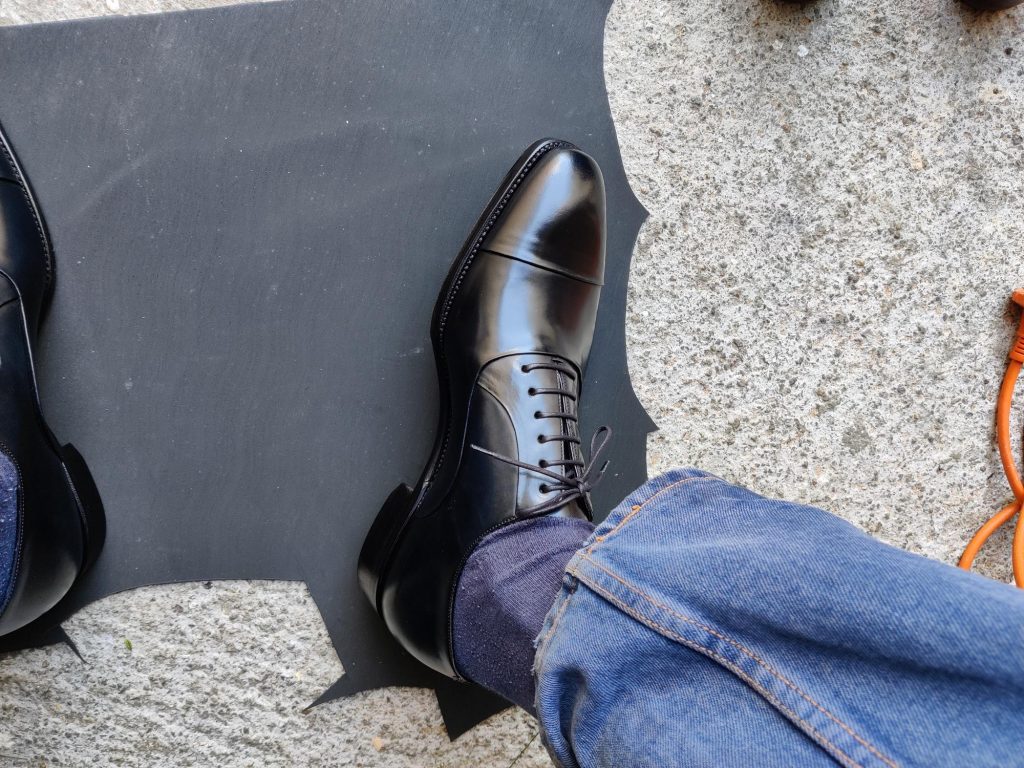 image source: reddit.com
image source: reddit.com
The origin of shoes can be traced back to practical necessity rather than fashion. Early humans invented footwear to protect their feet from the harsh terrain and environmental elements. The need for insulation from cold surfaces, protection against sharp objects, and prevention of injuries drove the development of rudimentary shoe-like coverings.Advertisement
76. The study of footprints is called ichnology
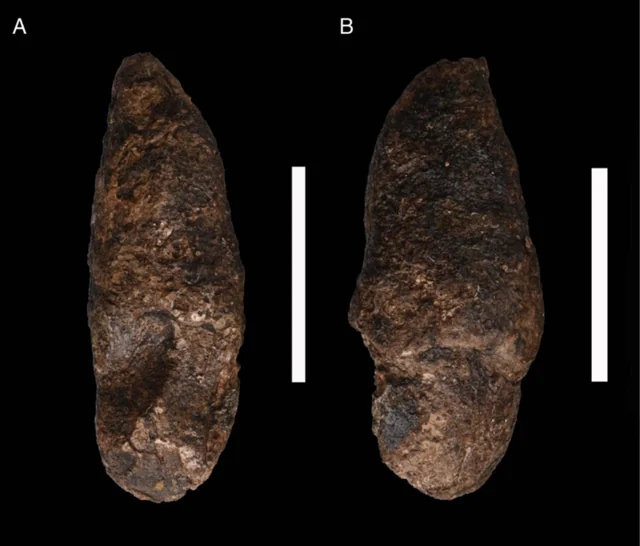 image source: reddit.com
image source: reddit.com
Ichnology, a lesser-known but intriguing field of study, is dedicated to the examination of footprints and traces left by living organisms. This scientific discipline goes beyond the analysis of human footprints, encompassing the study of tracks and traces made by various animals, birds, and even insects.Advertisement
77. Women are more likely to experience foot problems
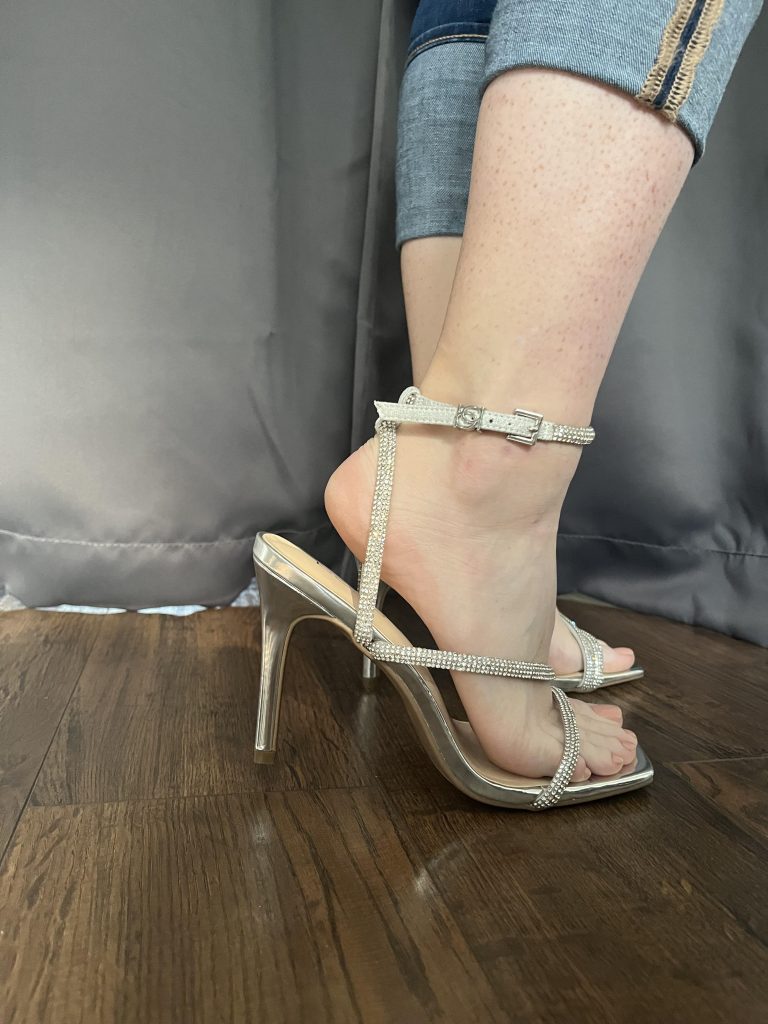 image source: reddit.com
image source: reddit.com
The association between women's footwear choices, particularly high heels, and foot problems is a well-documented phenomenon. Women are more likely to experience foot issues than men, largely due to the prolonged use of high-heeled shoes.Advertisement
78. Onychomycosis is a common fungal infection
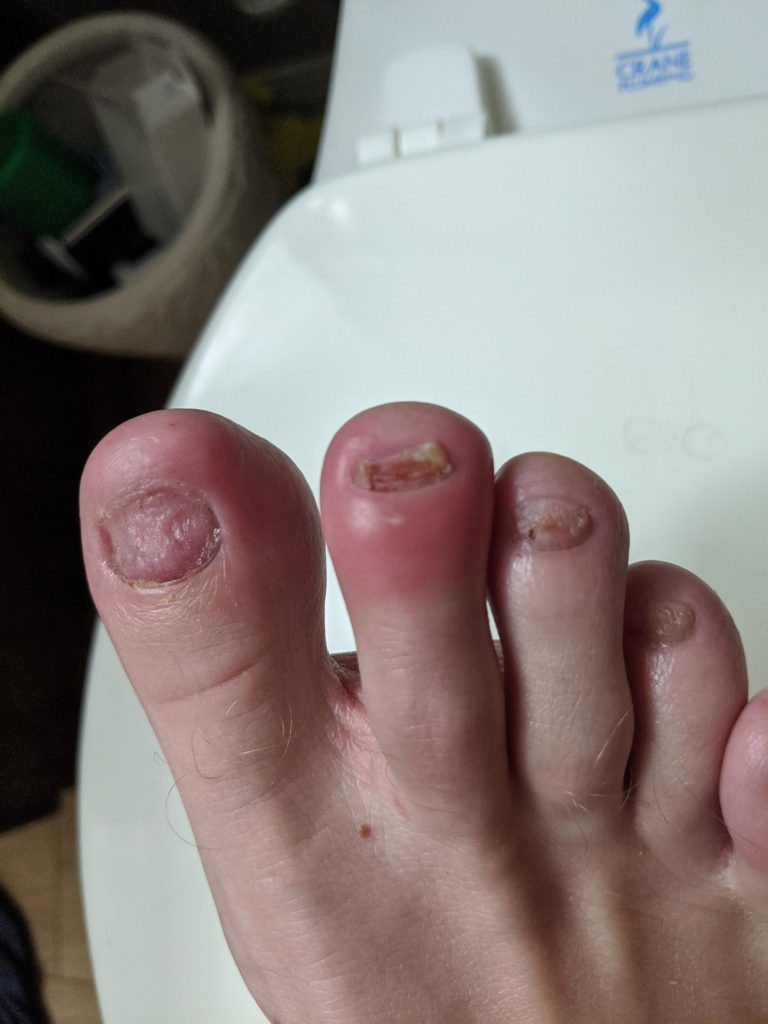 image source: reddit.com
image source: reddit.com
Onychomycosis, a prevalent and often persistent condition, refers to a fungal infection affecting the toenails. This common ailment is caused by various fungi, with the most prevalent being dermatophytes, yeasts, and molds.Advertisement
79. There are 52 bones in a pair of human feet
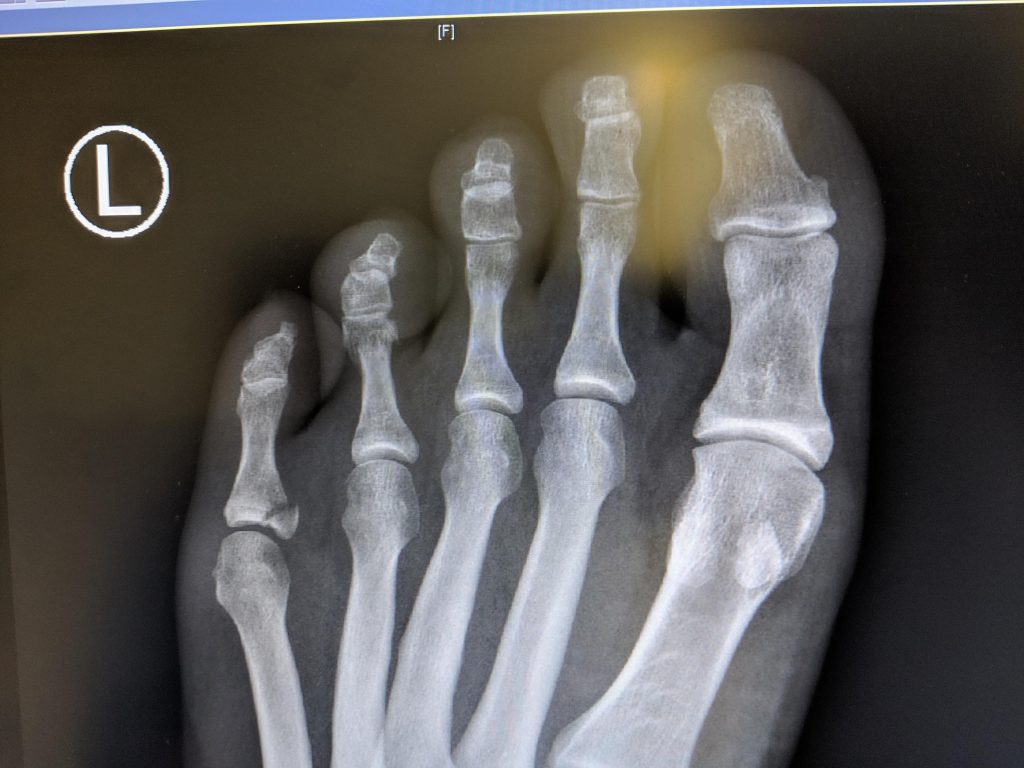 image source: reddit.com
image source: reddit.com
The human foot is a marvel of biomechanical intricacy, comprising 52 bones in each pair, which collectively account for about 25% of all the bones in the body. This remarkable structural complexity allows for a wide range of motion, flexibility, and weight-bearing capabilities.Advertisement
80. You spend about four hours in total a day on your feet
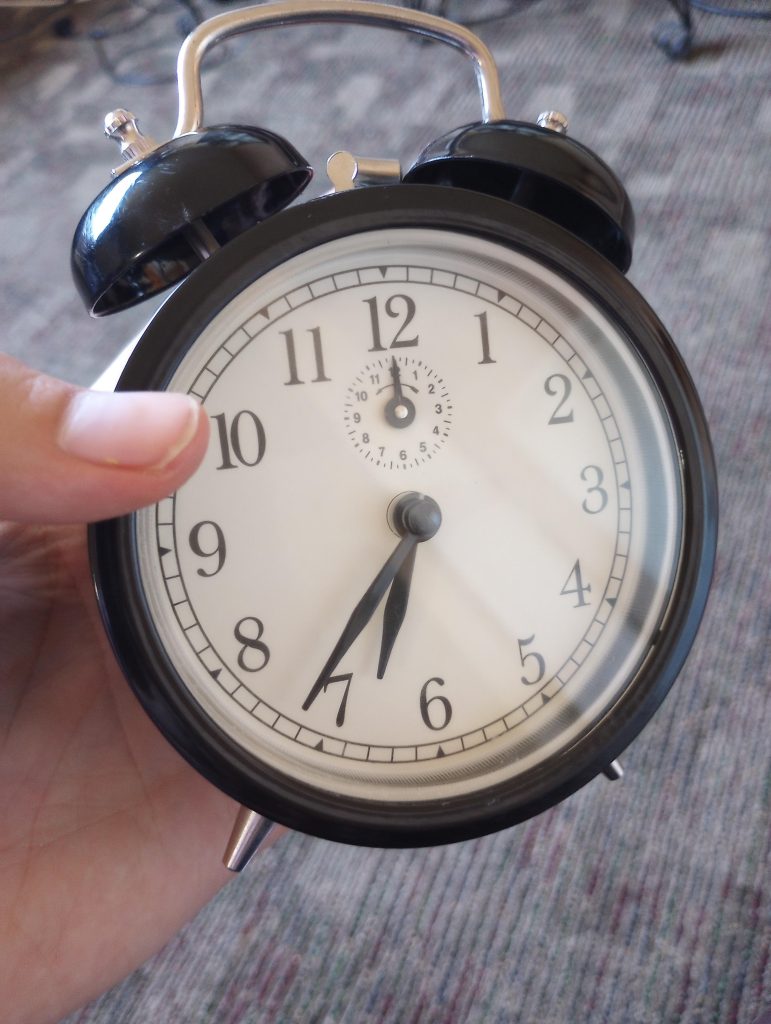 image source: reddit.com
image source: reddit.com
The average person spends a considerable amount of time on their feet, with an estimated four hours a day dedicated to weight-bearing activities such as standing, walking, or running. This daily duration underscores the significant role that feet play in facilitating mobility and physical engagement.Advertisement
81. That horrid foot smell...
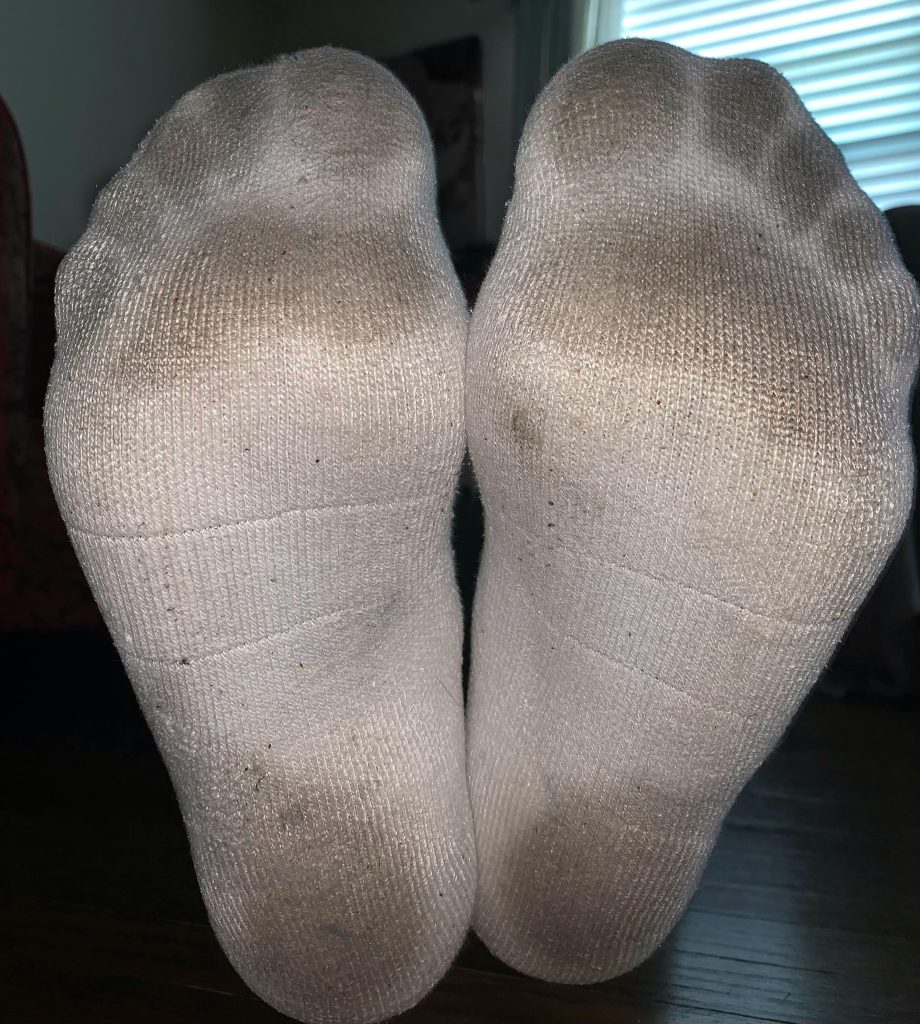 image source: reddit.com
image source: reddit.com
The distinctive smell often associated with feet is a result of a natural biological process. Bacteria residing on the skin break down sweat, particularly from the numerous sweat glands in the feet, into organic acids. The combination of sweat and the breakdown of its components creates an environment conducive to bacterial proliferation.Advertisement
82. The horrors of foot binding
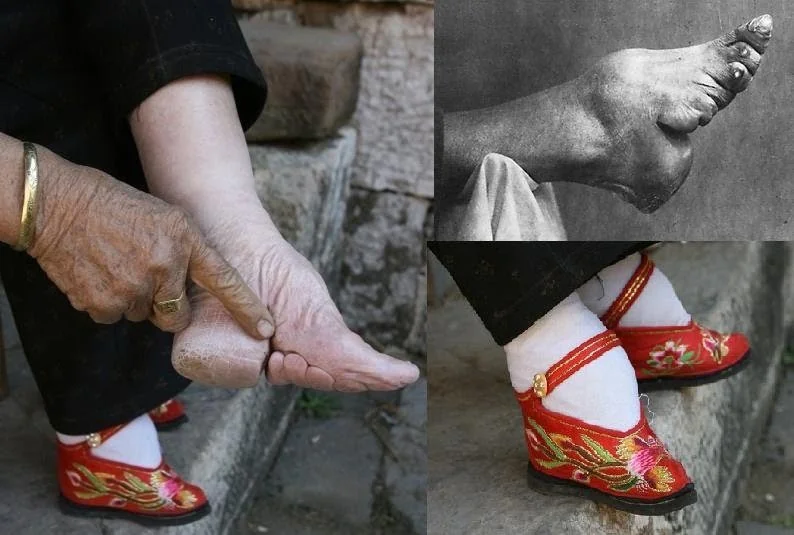 image source: reddit.com
image source: reddit.com
Foot binding, a historical Chinese practice prevalent for centuries, particularly among women of the upper classes, involved the tight binding of women's feet to achieve smaller and more delicate shapes. This cultural tradition, often associated with notions of beauty and social status, subjected young girls to a painful and debilitating process of foot deformation.Advertisement
83. Foot size can change with age
image source: reddit.com
Foot size is not a static characteristic and can change with age due to various factors. As the body undergoes natural aging processes, ligaments and tendons in the feet may lose elasticity, leading to changes in foot shape and size. Additionally, factors such as weight fluctuations contribute to alterations in foot dimensions.Advertisement
84. Footprints of dinosaurs
 image source: reddit.com
image source: reddit.com
The footprints of dinosaurs, preserved in rocks and sedimentary layers, serve as invaluable clues for paleontologists seeking to understand the behaviors and characteristics of these ancient creatures. These fossilized footprints, known as ichnites, offer insights into dinosaur locomotion, social interactions, and ecological niches.Advertisement
85. A condition called Morton's neuroma can cause pain and discomfort
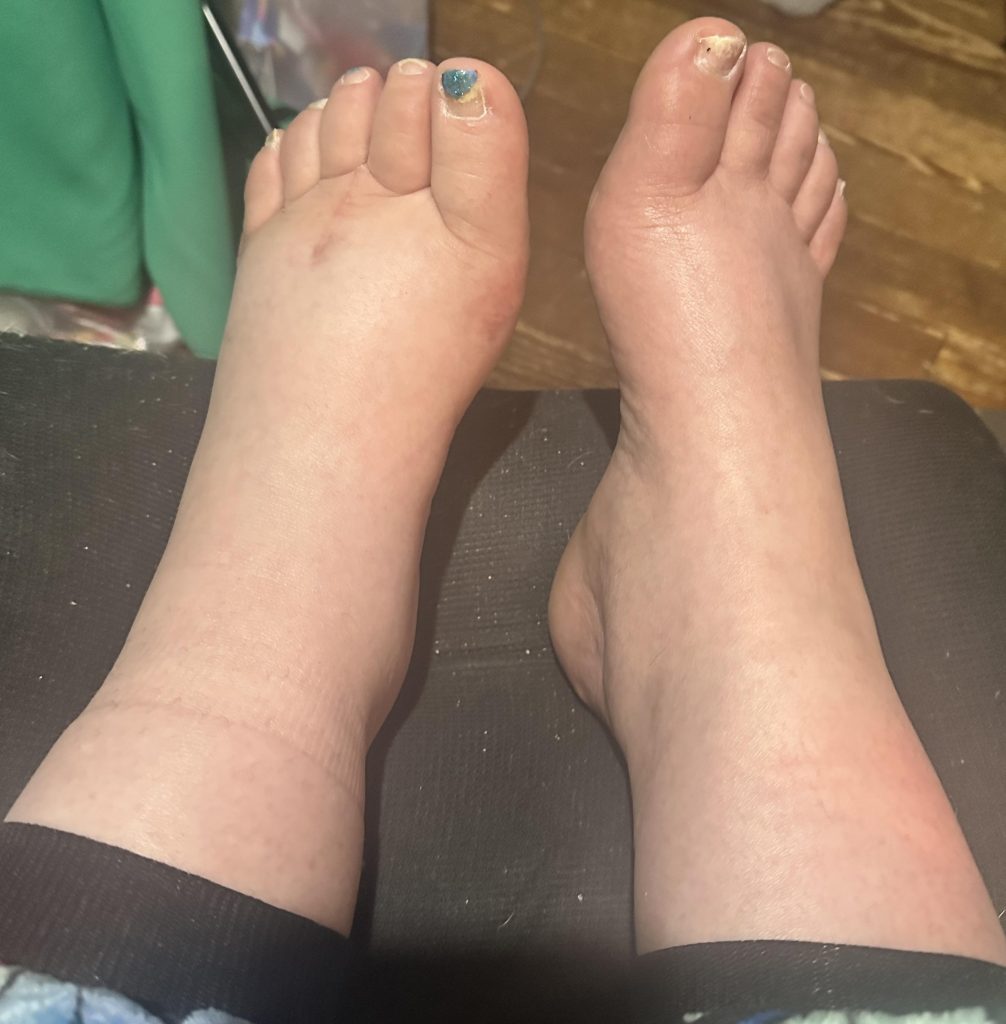 image source: reddit.com
image source: reddit.com
Morton's neuroma is a condition that can cause pain and discomfort in the ball of the foot, specifically due to the thickening of tissue around a nerve, usually between the third and fourth toes. This painful enlargement can lead to symptoms such as a burning sensation, tingling, or numbness.Advertisement
86. The foot's arch is key to distributing body weight
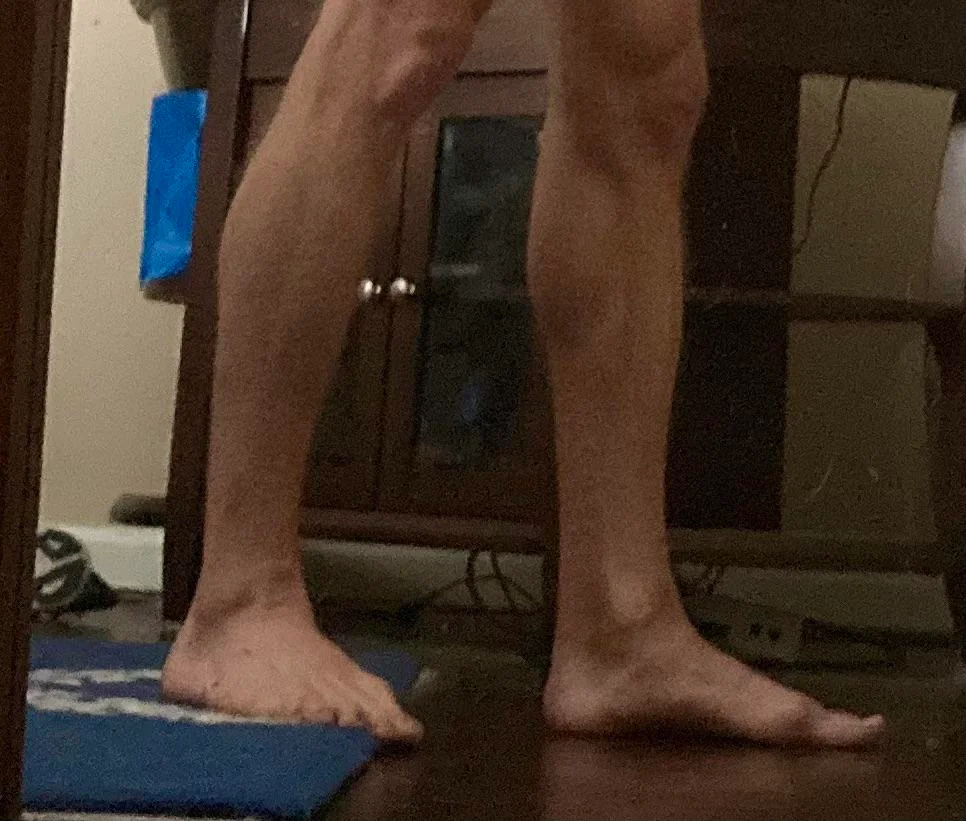 image source: reddit.com
image source: reddit.com
The foot's arch, a marvel of biomechanical design, serves a crucial role in distributing body weight and absorbing shock during walking and running. Comprising three main arches—the medial longitudinal arch, the lateral longitudinal arch, and the transverse arch—the foot's arches act like springs.Advertisement
87. Ancient Romans often went barefoot
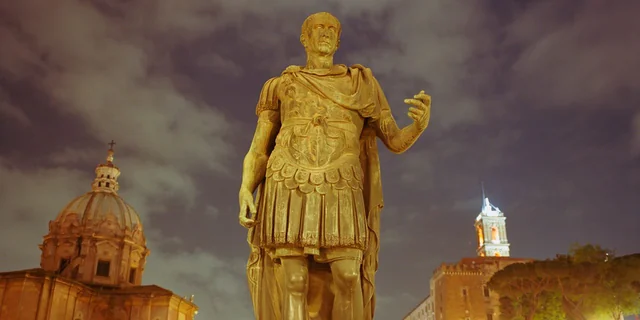 image source: reddit.com
image source: reddit.com
In ancient Rome, footwear choices were influenced by both practical considerations and cultural norms. Romans often went barefoot at home, emphasizing comfort and simplicity within the confines of their domestic spaces. This practice not only allowed for a more relaxed and unencumbered lifestyle indoors but also reflected the cultural values.Advertisement
88. The 'bunion' drama
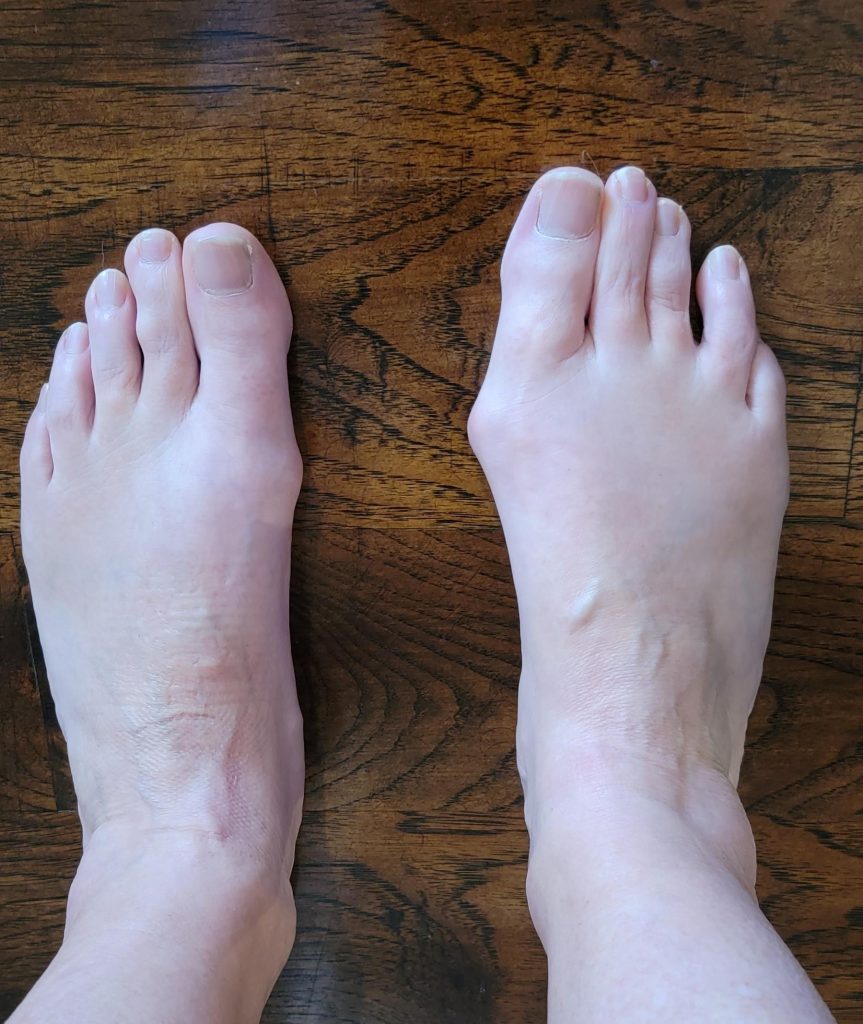 image source: reddit.com
image source: reddit.com
A bunion is a common and often painful foot condition characterized by a bony bump that forms at the base of the big toe. Known medically as hallux valgus, a bunion develops when the big toe leans towards the second toe, causing the metatarsophalangeal joint to protrude. This misalignment results in the formation of the characteristic bony bump.Advertisement
89. The world's smallest shoes were made in the 1890s
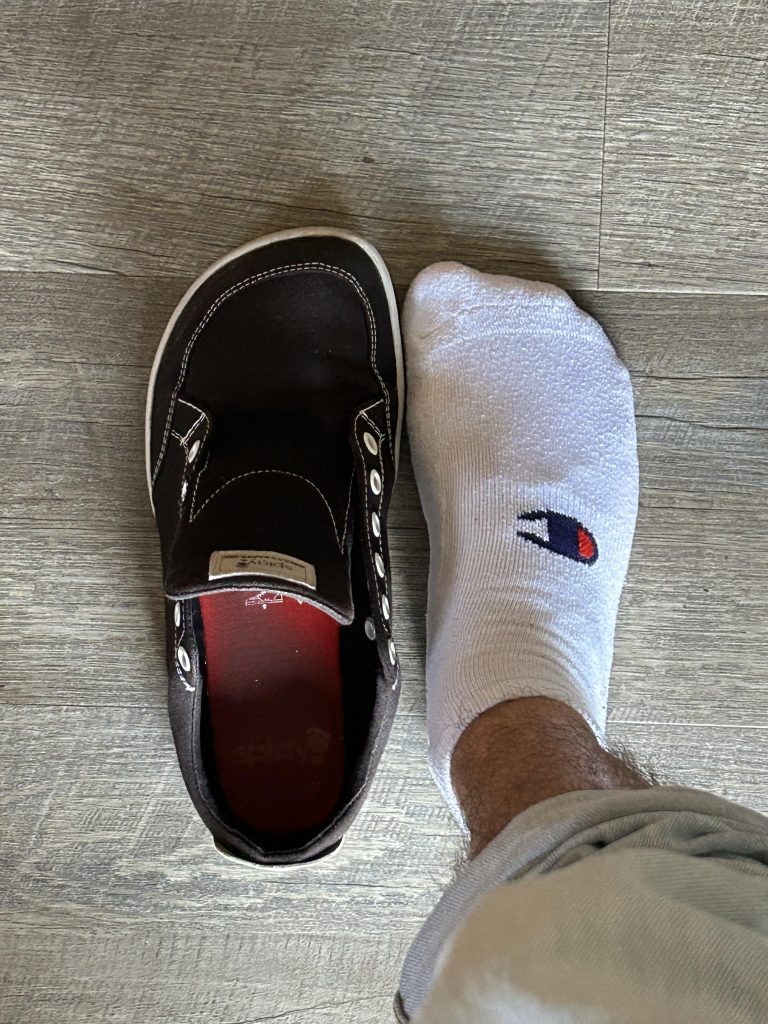 image source: reddit.com
image source: reddit.com
Percy Pilcher, a pioneering aviator and inventor from the 19th century, created the world's smallest functional shoes in the 1890s, measuring a mere 1.5 inches in length. Pilcher's miniature shoes were designed for his "pocket glider," a precursor to modern hang gliders.Advertisement
90. The average walking speed is about 3.1 miles per hour
image source: reddit.com
The average walking speed, a fundamental aspect of human mobility, is approximately 3.1 miles per hour. This moderate pace reflects the efficiency and versatility of human ambulation, balancing speed with energy conservation. Walking speed varies among individuals and can be influenced by factors such as age.Advertisement
91. The astonishing size of an elephant's footprint
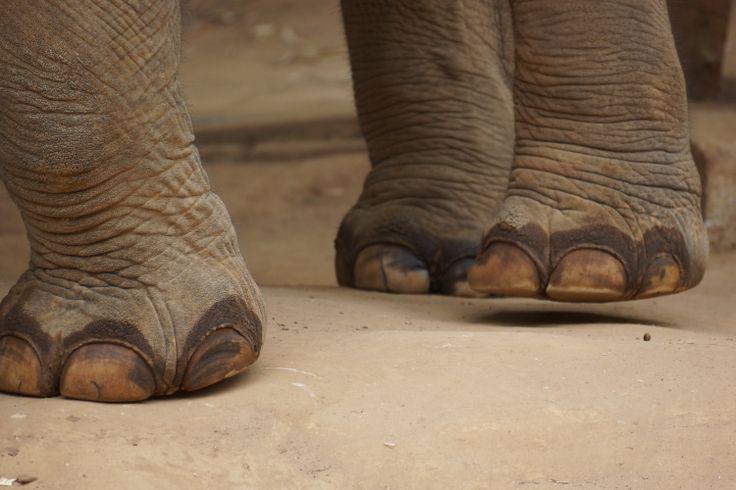 image source: reddit.com
image source: reddit.com
The footprint of an adult elephant is a testament to the colossal size and weight of these majestic creatures, measuring up to an impressive 22 inches in diameter. The sheer enormity of the footprint underscores the powerful impact that elephants exert on their environment, whether traversing through forests, grasslands, or mud.Advertisement
92. You'll walk the equivalent of around the Earth in your lifetime
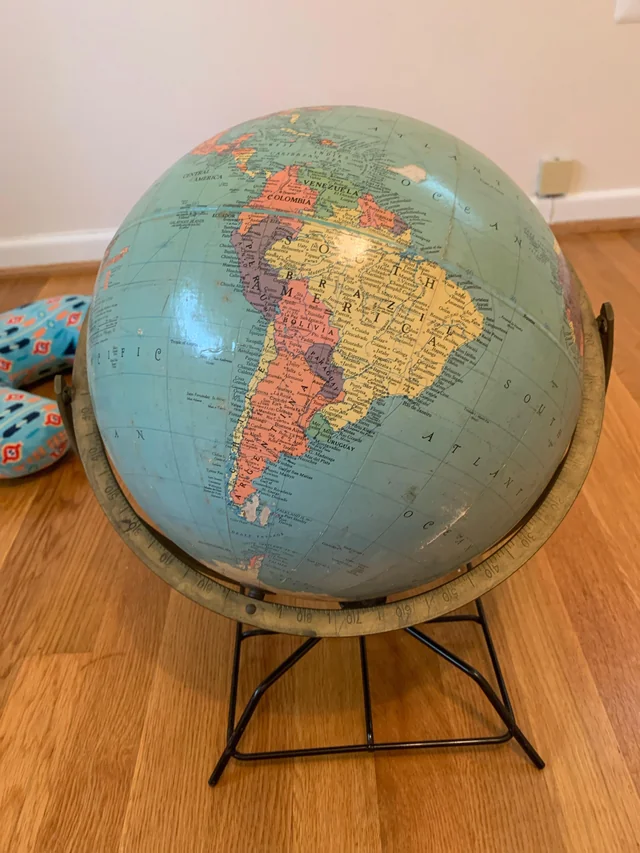 image source: reddit.com
image source: reddit.com
The cumulative distance that the average person covers during a lifetime is awe-inspiring, with the equivalent of walking four times around the Earth. This staggering statistic emphasizes the incredible endurance and mobility of the human body over the span of decades. Each step taken adds to this monumental journey.Advertisement
93. The sheer amount of nerve endings in each of your feet
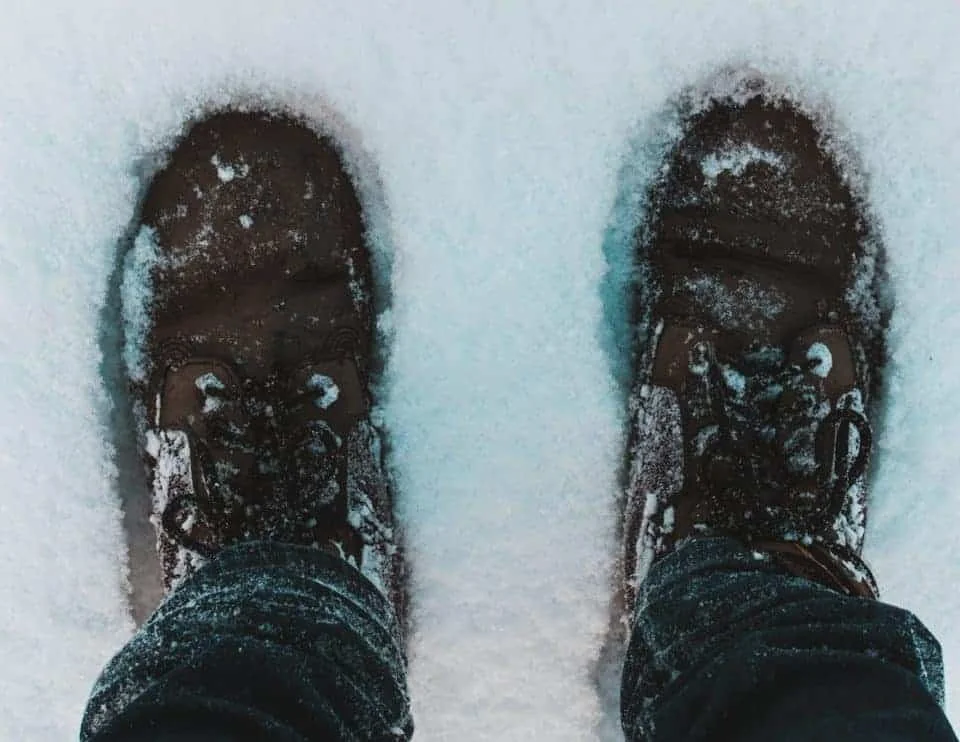 image source: reddit.com
image source: reddit.com
The soles of the feet are a sensory marvel, housing over 200,000 nerve endings in each foot. This dense network of nerve receptors provides a wealth of sensory information, enabling the feet to detect and respond to a variety of stimuli, including pressure, temperature, texture, and vibration.Advertisement
94. The longest recorded barefoot walk
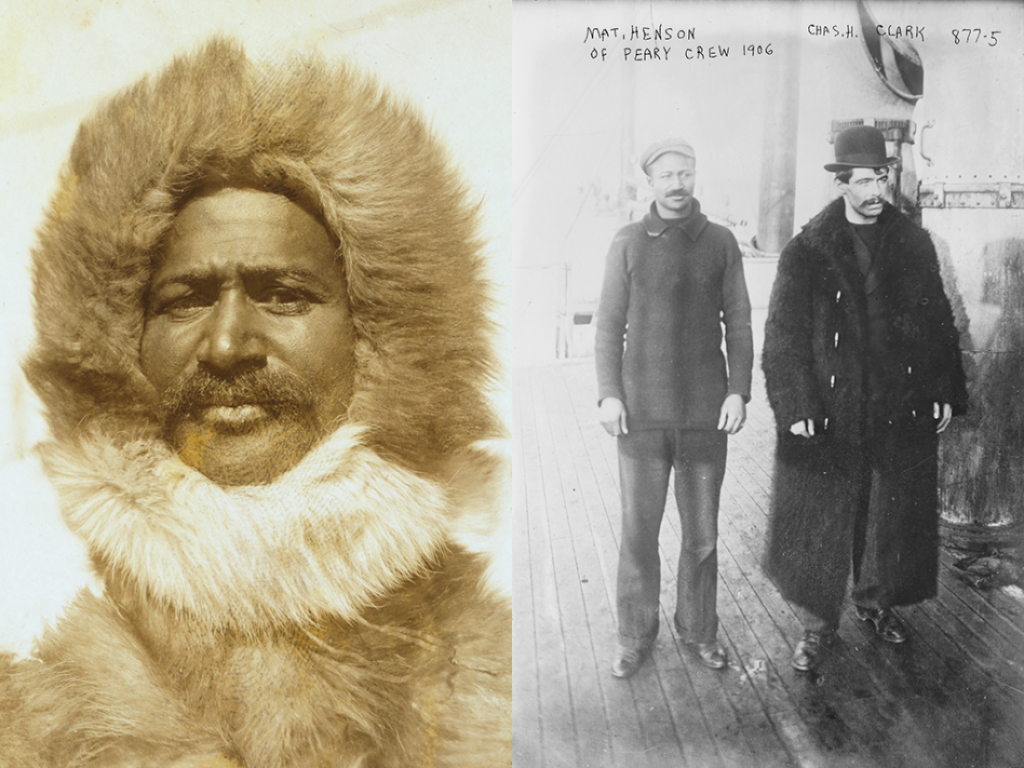 image source: oceanwide-expeditions.com
image source: oceanwide-expeditions.com
In 1909, Matthew Henson achieved a remarkable feat by completing the longest recorded barefoot walk, covering over 3,000 miles. Henson, an African American explorer, embarked on this extraordinary journey during Robert Peary's Arctic expedition to the North Pole.Advertisement
95. Health problems in China
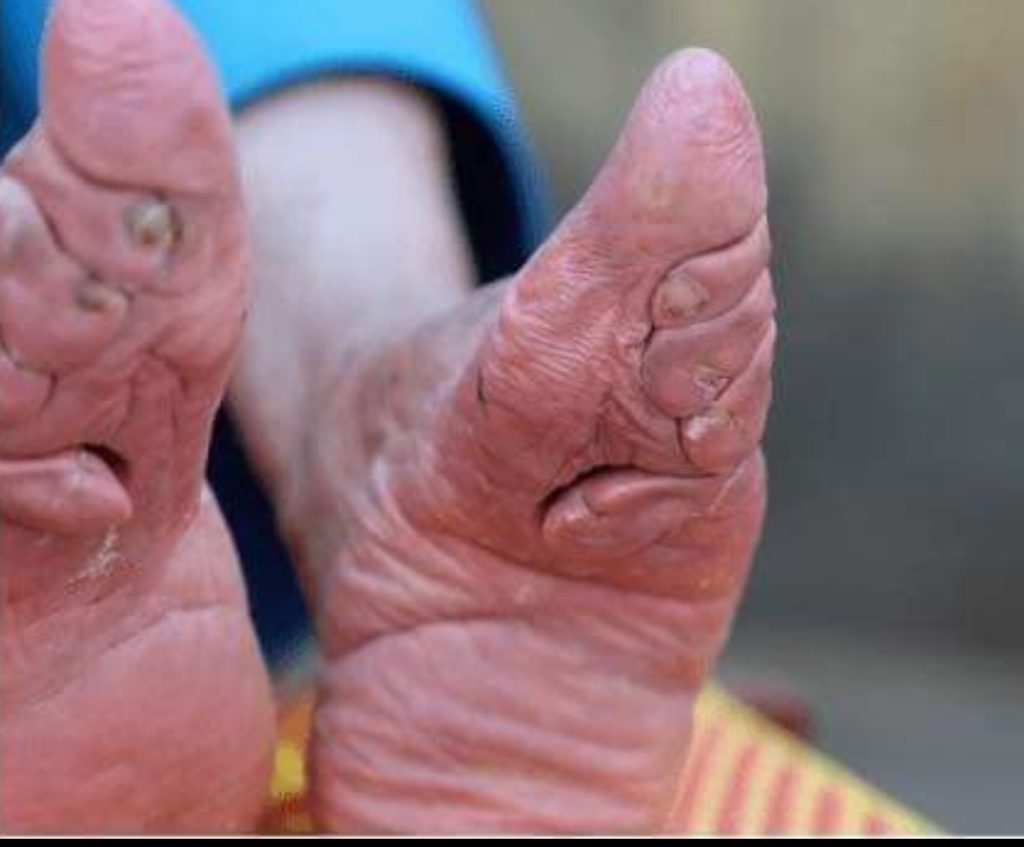 image source: reddit.com
image source: reddit.com
Foot binding, a deeply entrenched cultural practice in China for centuries, involved tightly binding the feet of young girls to achieve a smaller and more aesthetically pleasing shape known as "lotus feet." This agonizing process resulted in severe deformities, as the toes were bent and the arch of the foot was broken.Advertisement
96. The world's fastest mile: 6 minutes and 17 seconds
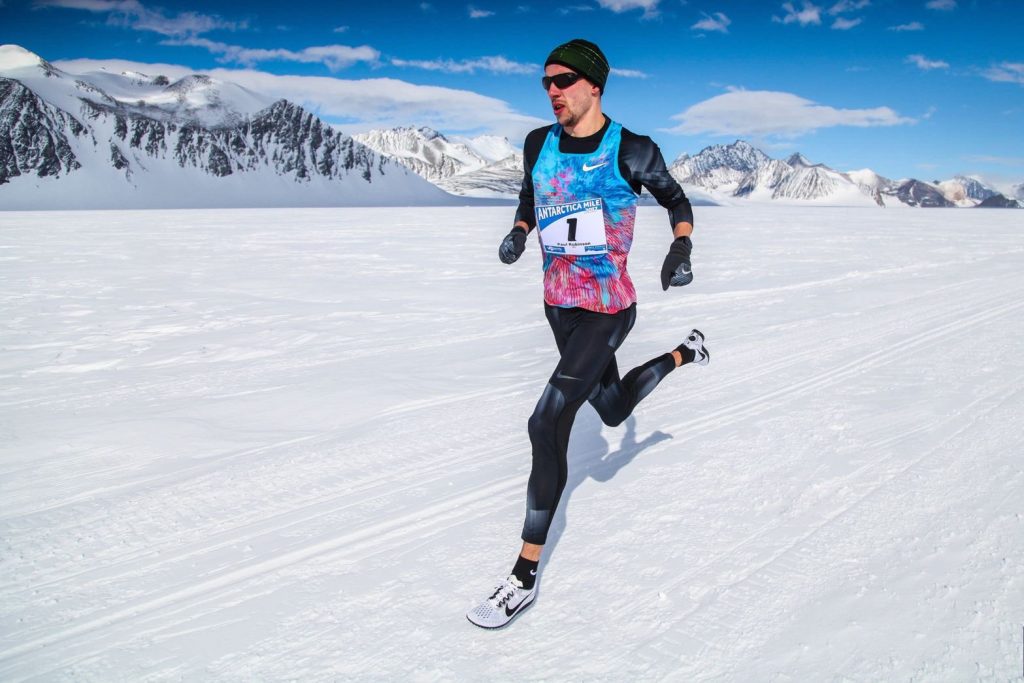 image source: x.com
image source: x.com
Richard Donovan's astonishing achievement of running the world's fastest mile on one foot, completing it in 6 minutes and 17 seconds in 2010, stands as a testament to human athleticism and determination. This remarkable feat not only showcases Donovan's exceptional physical capabilities but also emphasizes the adaptability of the human body.Advertisement
97. The feet are crucial for balance
 image source: reddit.com
image source: reddit.com
The feet play a pivotal role in providing stability and balance, making them essential tools in activities such as yoga and martial arts. In yoga, the feet are actively engaged in grounding and anchoring the body during various poses, fostering a connection with the earth and enhancing stability.Advertisement
98. The importance of removing shoes before entering a home
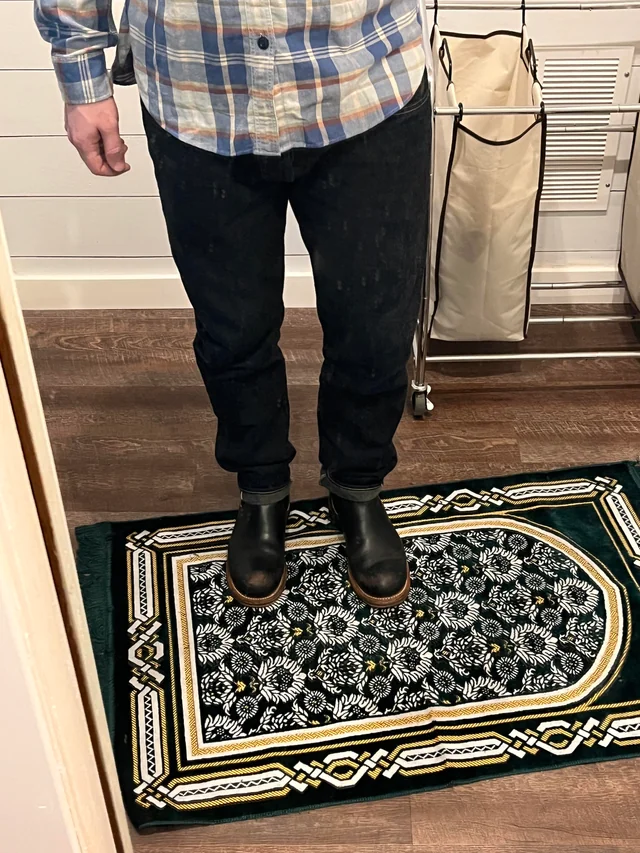 image source: reddit.com
image source: reddit.com
The act of removing shoes before entering a home is a cultural norm in many societies and is often regarded as a sign of respect. This custom is deeply rooted in practical considerations, as it helps maintain cleanliness within the home by preventing outdoor dirt and debris from being tracked indoors.Advertisement
99. The world record for 48 socks on one foot!
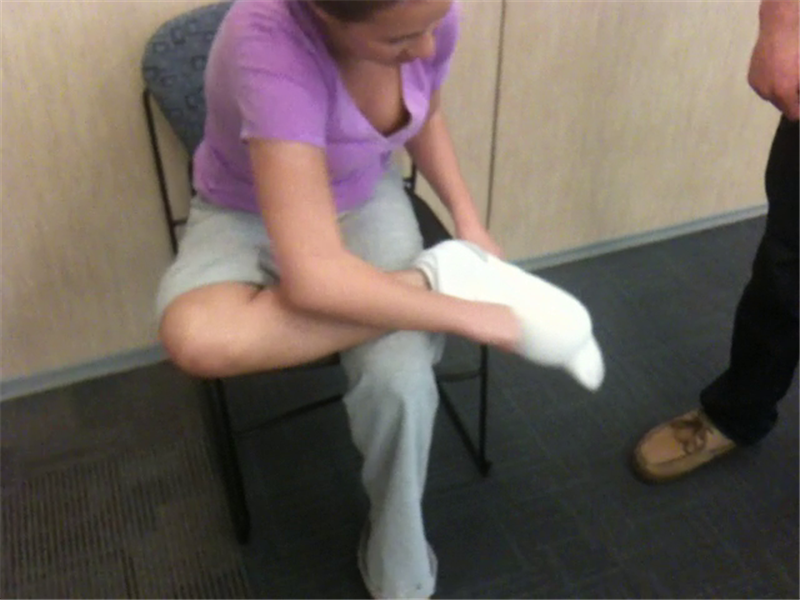 image source: recordsetter.com
image source: recordsetter.com
The Guinness World Record for the most socks put on one foot in 30 seconds, an amusing yet skillful feat, is held at an impressive 48 socks. This quirky record combines speed, dexterity, and precision in an unconventional challenge that showcases a unique set of skills.Advertisement
100. The study of footprints is key in forensic science
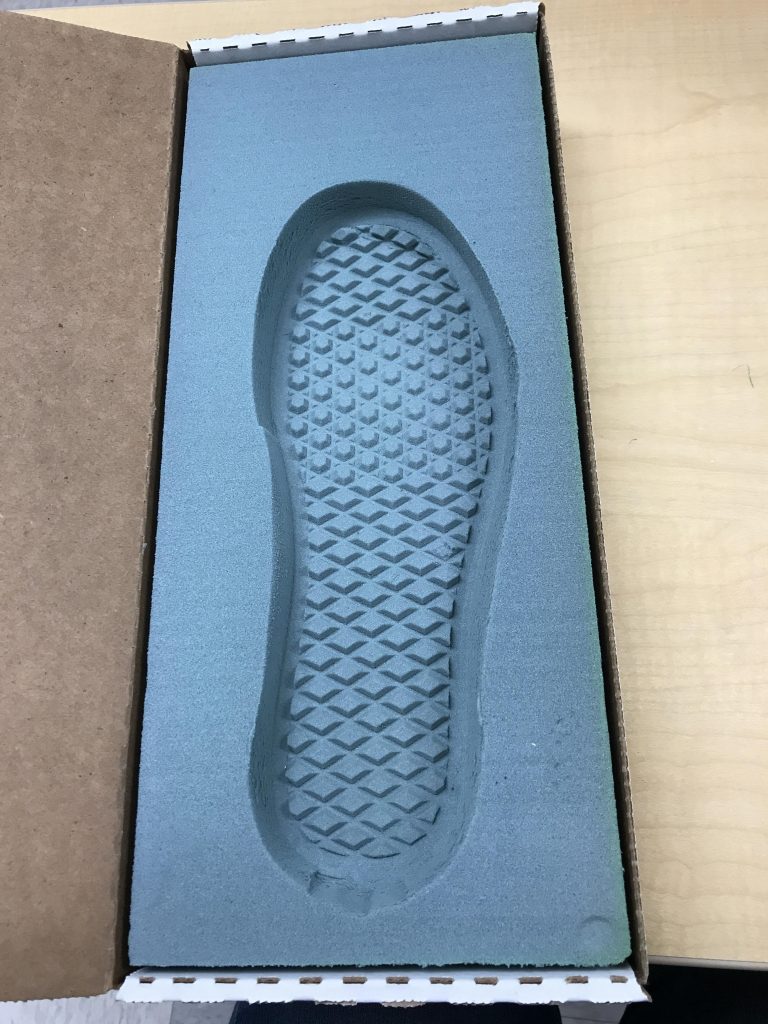 image source: reddit.com
image source: reddit.com
The study of footprints, known as ichnology, has found practical applications in forensic science, where it is used to identify individuals and track their movements. Forensic experts analyze the unique patterns and characteristics of footprints left at crime scenes, enabling them to determine features such as shoe size, gait, and weight distribution.Advertisement

